- Home
-
SHOP ECO FARM
- ECO Farm Grow Lights
- ECO Farm LED Grow Lights
- ECO Farm Quantum Board
- ECO Farm Samsung LED Grow Lights
- ECO Farm COB Grow Lights
- ECO Farm Commercial Lights
- ECO Farm Supplemental Grow Light
- ECO Farm Fluorescent grow lights
- ECO Farm HPS & MH Grow Lights
- ECO Farm CMH Grow Lights
- ECO Farm HID/CMH Bulbs & Ballasts
- ECO Farm Grow Tents & Kits
- ECO Farm 2x2ft Grow Kits
- ECO Farm 3x3ft Grow Kits
- ECO Farm 3.3x3.3ft Grow Kits
- ECO Farm 4x4ft Grow Kits
- ECO Farm 5x5ft Grow Kits
- ECO Farm Grow Tent - Standard Style
- ECO Farm Grow Tent - Extension & Roof & Lodge Style
- ECO Farm Extraction & Harvest
- ECO Farm Rosin Press Machine
- ECO Farm Dry & Wet Trimmers
- ECO Farm Oil Accessories
- ECO Farm Medicinal Plants Grinder
- ECO Farm Medicinal Plants Containers
- ECO Farm Medicinal Plants Dryer
- ECO Farm Refrigeration Dryer
- ECO Farm Climate Control & Other Accessories
- ECO Farm Inline Duct Fans
- ECO Farm Oscillating Fans
- ECO Farm Exhaust Fans
- ECO Farm Air Filter
- ECO Farm Duct Muffler
- ECO Farm Ventilation Kits
- ECO Farm Plant Humidifiers
- ECO Farm Plant Dehumidifiers
- ECO Farm Hydroponic Accessories
- ECO Farm Other Accessories
- ECO Farm Hydroponics Microscopes
-
TOP BRANDS
- Grow Lights Brands
- Adjust-A-Wing
- Apollo Horticulture
- Bestva
- Black Dog LED
- California Lightworks
- ChilLED Grow Light
- Eco Farm
- HLG - Horticulture Lighting Group
- Kingled
- Kind LED
- Mars Hydro
- Morsen
- Neilo
- NextLight
- Phlizon
- PlatinumLed
- Roleadro
- Optic LED Grow Lights
- ViparSpectra
- Vivosun
- EYE Hortilux
- IPOWER
- NanoLux
- Phantom grow light
- Gavita grow lights
- Grower's Choice
- Lumatek
- Maxibright
- Yearld Pro
- ThinkGrow
- Crecer Lighting
- Green Sunshine Electric Sky
- fohse aries
- loriflux
- luxx
- fluence
- iluminar
- Lex
- LTC
- Rayonled
- FGI
- PHOTONTEK
- Grow Tents & Kits Brands
- Apollo Horticulture
- Black Box
- CoolGrows
- Eco Farm
- GrowLab
- Gorilla Grow Tents
- Mars Hydro
- Quictent
- Secret Jardin
- Unit Farm
- TopoGrow
- VIVOSUN
- Topolite
-
COMPANY INFO
-
COOPERATE WITH US
- Blog
Best 300W LED Grow Lights for Small Grow Tents (2022 Updated)
August 24, 2022
We have seen great progress in LED grow lights over the past 3 years. They are more affordable than ever and we are spoiled! In this article, we’ll provide our top picks for the best LED grow lights currently available for small grow tents and different budgets.
Are LEDs a Good Option for Growing Plants?
LED grow lights are relatively new to the indoor growing world, but they have grown in popularity over the past few years for their ability to produce high yields while staying cool and using a reasonable amount of power.
Today’s LED models are more suitable for growing plants than they were a few years ago. Many modern lamps are full spectrum or “broadband” spectrum (rather than just red and blue LEDs, which produce blue-violet light, sometimes called “blur”). Full-spectrum light is easier on the eyes, and adding at least some green light to the blur usually results in healthier growth. Other spectral colors such as red, far red and infrared are important for the budding/flowering stage. LED manufacturers have developed specialized lenses that direct light towards plants and increase penetration, producing greater yields with the same amount of light compared to older models. There are also many different form factors, ranging from case to diode size, which vary from model to model.
Modern LED grow lights can produce impressive results. These indoor plants grow entirely under LED grow lights from seed to harvest!
ECO Farm FLD 320W Full Spectrum Dimmable LED Grow Lights

Features:
Equipped with SMD 3030 chip, this ECO Farm LED grow light has a maximum yield of 2.5 grams per watt, 30% higher average PPFD, and 50% higher yield and quality compared to other similar lights. Consumes only 320W. This LED grow light has a Yield Max spectrum (3000k, 6000k, 660nm red, 730nm IR LED), which can make the light more uniform, truly simulate the sunlight, and perfectly meet the entire growth cycle of all plants from seed to harvest, including Medicinal plants, flowers, vegetables, etc. Newly designed fast heat dissipation material aluminium with 4 slim cooling strips, produces less heat and saves 50% energy than other old grow lights! The whole plant grow lights are waterproof. No need to worry about wet growing conditions. LED grow lights can be folded 180°, easy to install and move.
Grow Light Science PROGROW 320 LED Grow Light
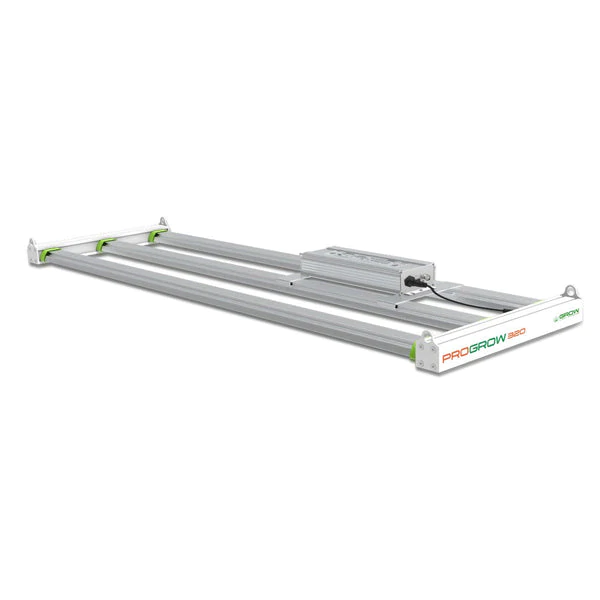
Features:
Grow Light Science Grow 300 320W LED Grow Light is a full spectrum, high performance lighting solution for commercial or home indoor garden or planting operations. The form factor of the Grow 300 allows for expandability and multiple grow room and tent configurations. The incredible light output (PPF), spectral distribution and efficacy of this grow light will give your plants amazing results at an affordable price. PPFD levels of up to 1,500 umols/m2/s will proportionally increase yield as long as other key factors such as CO2, water and nutrients remain in balance. The GROW 300 easily delivers PPFD levels in excess of 1,000 umols/m2/s, either individually or in multi-cell arrays.
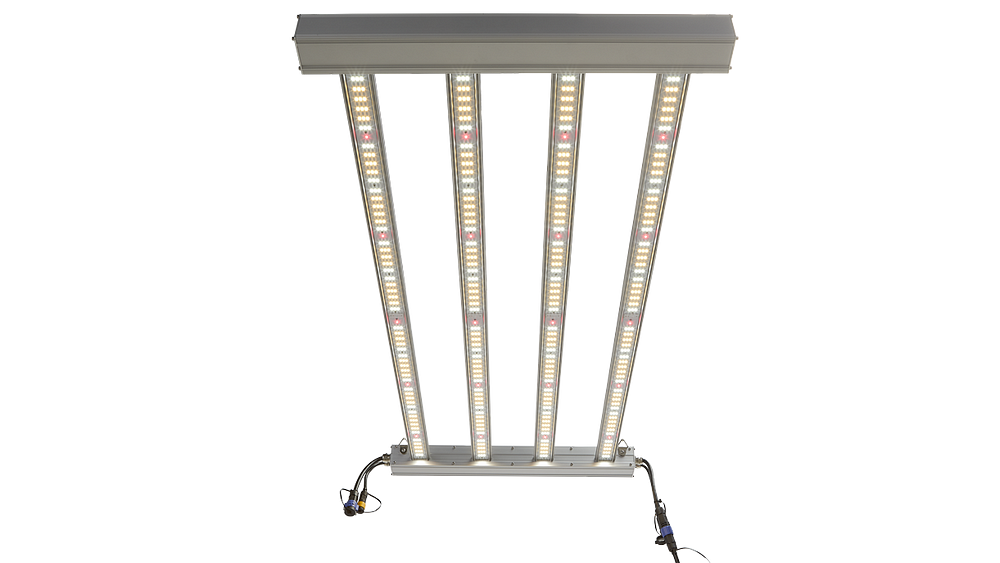
Features:
Cultivate Tech grow light is a 320W, full-cycle LED grow light designed to target only the parts of the spectrum your plants need to thrive through both vegetative and flowering cycles. At 320 TRUE LED watts, the GrowtechX320 is the equivalent to approximately 600 HPS or metal halide watts, meaning, it runs on nearly half the wattage of traditional grow lights. Growtech X’s Full Spectrum Spectral Diode Mix offers a perfectly balanced mix of 660nm red diodes and full spectrum 3000 + 6500K white diodes. This thoroughly tested light spectrum is designed for complete plant development (full cycle indoor light for seed germination, clones/cuttings/mothers, and for both vegetative and flowering cycles).
Things To Consider When Buying an LED Grow Light
Power
The first thing you need to look at is the power the LED fixture provides.
When it comes to power, this aspect does not just cover wattage, but other specifications, such as Photosynthetic Photon Flux (PPF), the efficacy, and average Photosynthetic Photon Flux Density (PPFD).
PPF vs PPFD
PPF
PPF refers to the amount of light produced by a source, in this case, an LED grow light, per second; measured in umol per second.
Now, if you have a grow area that measures 36 square meters, and your strain needs around 500 umol per square meter, you need 1,800 umol/s of light for the growing area.
Thus, you will need an LED grow light that produces 1,800 umol per second. You can use several in tandem to get the required PPF.
Note that PPF does not automatically equate to the amount of light a plant receives, but rather how much is produced by a source.
PPFD
PPFD, meanwhile, is how effective your plants can use the photons from the light. You would want something that distributes something evenly across the grow area.
If you run a commercial-sized facility, you will need a PPFD of around 1,500 to 2,000 umol/s per square meter per second, which can be supplemented by a CO2 enrichment system and other environmental controlling systems.
But, if you only have a small grow area, 1,000 will be too much, as it would be a waste of energy, since small-time or personal growers rarely use control systems for environment and CO2 enrichment.
Lastly, Efficacy deals with how much photons you can get on the same power consumption.
Spectrum
Some LED grow lights are full spectrum, which gives it adjustable properties to adapt to different phases of growth.
Ideally, you would want to get a full spectrum, which includes UV lighting. That will help you save more, as you can have one set to do most, if not all, the growing phases.
Full-spectrum LED grow lights have both red and blue spectrums, as well as infrared and ultraviolet lighting. These light colors matter, as they help in different stages of growth, inducing photosynthesis, and blooming of buds.
Conclusion
So here is our list of recommended LED grow lights for small grow tents. There are plenty to choose from, but no matter which light you choose, be sure to consider your plans for the next 3 or 4 plantings. Thanks for reading!
Mars Hydro FC-E 3000 300W LED Grow Light VS Gavita Pro 900e LED 120–277V
August 23, 2022
In general, for indoor plants, light is one of the most important criteria affecting growth and yield.
So, when it comes to planting and caring for yourself, you should learn and choose the most suitable.
Here are the advantages of the LED grow lights and how we found the best grow lights for indoor plants.
What are the Advantages of Using Grow Lights?
LED Wattage Requirements
Use no less than 32 watts per square foot of growing space as a general rule. When using LED grow lights, it’s recommended to utilize between 50 and 80 watts per square foot, if at all possible. A 2 by 2 grow space, for instance, would need at least 128 watts, while a 5 by 5 grow area would need at least 800 watts.
The Best Results Are Provided by Full Spectrum LEDs
Plants have been exploiting the sun’s power to develop for millions of years, adapting to grow the most effectively and efficiently when exposed to the whole range of the sun’s light spectrum. This light spectrum is closely resembled LED grow lights.
Because they provide a wide and balanced light spectrum, full-spectrum LEDs are excellent indoor grow lights. The spectrum provided to indoor plants by conventional grow lights is typically inadequate or uneven, peaking in some color spectrums while falling short in others. The built-in switch included in many high-end models makes switching between the vegetative and flowering growth cycles simple.
The Decision Is Simple
Equipping your indoor grow space with the appropriate grow lights doesn’t have to be difficult or confusing. LEDs are the closest thing to “plug and play” that is currently available, making it quite easy to start growing plants indoors. Although they initially cost a little more, the decision may be worthwhile when you take into account the longevity, quality, and ease.
Mars Hydro FC-E 3000 300W LED Grow Light
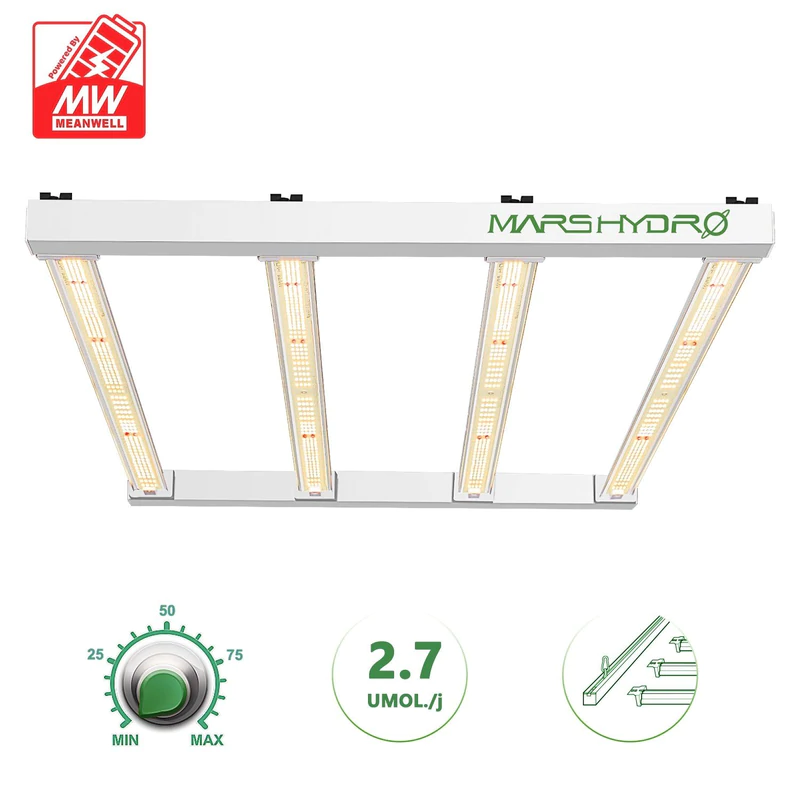
Features:
This Mars Hydro LED grow light with 1184pcs BridgeLux Diodes & Meanwell Driver, market-leading PPF 2.7 µmol/J, Max 2.5g yield/watt with 30% higher Average PPE, more cost-effective compared with other same type lights.Only consumes 300W, perfectly cover 3x3ft (personal), 2.5x2.5ft (commercial) grow space. Built-in removable bars interval & disability enable the exact & dynamic PPFD control over each of the plant growing stages, FC-E3000 detachable bars deliver highly uniform adjustable, PPFD levels throughout the plant canopy, best for more uniform Density Buds. Real Aluminum heatsink together with 4 slim profile passively cooled bars (THINNER & LARGER surface) and detachable Meanwell Driver, create less heat, save 50% energy than other old grow lights.
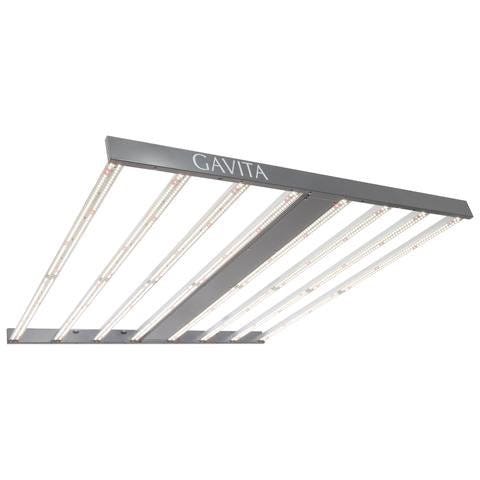
Features:
The Gavita grow light is the perfect grow light solution. Taking inspiration from Gavita’s best-selling Pro 1700e, the Pro 900e is the ideal solution for vertical stands and tight grow tents. The Pro 900e delivers full spectrum coverage at 900 umol/s without overwhelming the lights in your grow tent. The Pro 900e uses only 345 watts of power and 2.6 umol/j, making it an energy-efficient grow jig with less heat emissions. The Pro 900e also features an IP66-rated enclosure that meets the highest FCC and UL8800 safety standards. Finally, the Pro 900e comes with a five-year warranty.
Things To Consider Before Buying One
Optimizing the light spectrum
During their growth, plants need different frequencies and different amounts of light for different growth stages.
Indoor plants are no exception, the most necessary light for this plant is green and red during the growth of indoor plants to be able to develop well in stems and leaves.
Blue light plays a vital role in this process, so you need to supplement and enhance it to the right level. Quite a few studies show that blue light not only has a beneficial effect on growth and yield but also increases both yield and quality of fruit.
And of course, the blue light will only be beneficial when you use it correctly and with the right intensity. So pay attention to the appropriate criteria and limits to achieve the best effect.
Intensity
With plants, each different stage will have corresponding brightness requirements. For example, their energy consumption will be enormous during flowering and fruiting.
Have you ever wondered why some gardens are highly productive but not for yourself?
The main answer is due to energy or, in other words, the intensity of light. Because not all lights meet the best grow light for indoor plants. So in choosing the best grow light for indoor plants, you need to have different notes for each stage.
Consider efficiency
Of course, when choosing the best grow light for indoor plants, you will find it difficult to find the right fit for your plant the first time because the growth will also be different with different soils and climates.
So you can first test for small areas, look and monitor the effect, and then apply it to significant charges. Then the loss in production and budget will be less, although it will cost you a little more time. But it is essential to ensure the best effect.
Selecting the right lights
The best grow lights for indoor plants are usually products specifically designed for agriculture. It will undergo detailed research and integrate the perfect light intensity for your plants.
Therefore, you should find the most suitable lamps for the best grow light for indoor plants. Don’t worry too much about the price, because you will not be disappointed with its effectiveness and usability.
Conclusion
LED grow lights have come a long way in the past few years. Quality has improved and prices have fallen. The best LED grow lights will produce high yields and large, dense shoot development — but at a higher price.
Choosing the best LED grow light to buy can be confusing because product descriptions are often misleading. We have listed good LED grow lights above. I hope you can choose the right grow lights for your indoor plants.
Best 800W LED Grow Lights Reviews in 2022
August 20, 2022
Which LED grow lights are best for indoor plants? LED grow lights are fast becoming a must for houseplants, and it happens to be a must for most gardeners to keep their plants healthy.
There is no doubt that LED grow lights are efficient, not only do they provide some light for your indoor plants, but they also provide you with a low-energy option compared to fluorescent and incandescent lights.
There are several reasons to choose LED grow lights, and there are many LED grow lights on the market today. However, you need to make sure you choose the right plants that are good for your houseplants.
LED grow lights are not only effective, but very effective. They can last up to 50,000 hours. Equipping indoor plants with LED grow lights is ideal, as most indoor plants are susceptible to pests and diseases. You also need to make sure your plants get enough light.
What is the effect of LED grow lights on plants?
Color variations of the LED grow lights are directly connected to the intended purpose.
Adding other colors to the spectrum, such as green, far-red, and deep blue aids this process by giving plants more information about their environment and overall resulting in higher quality plants (quicker growth, more secondary metabolite accumulation, etc). A spectrum that contains all colors is called a full spectrum and mostly resembles sunlight. If it has high proportions of green, the light will appear white to human eyes, and while not a crucial factor for plant growth, it does make the workaround of these lights easier and makes a visual inspection of the plants possible.
LED lighting systems can be configured to provide optimum photosynthetic photon flux density.
Photosynthetic flux density (PPFD) refers to the total amount of light that actually arrives at a plant surface. Higher PPFD levels generally translate into better plant quality and higher indoor crop yields. Because LED lighting systems operate at lower physical temperatures than traditional indoor lighting, LED fixtures can be placed closer to plant surfaces to generate those higher PPFD levels.
LED lighting produces larger plants and better crop yields.
Indoor cultivation that utilizes LED lighting is superior to crop production that relies on older artificial lighting sources, and in some ways, it may produce more bountiful harvests than outdoor cultivation which is subject to inconsistent amounts of sunshine and variations in weather patterns.
LED lighting is durable.
LED grow light system will generate high-quality light for more than 50,000 hours of use. LED lights are resistant to vibrations, shock, and impact from external objects. Their durability makes them ideal for exposure to weather, wind, and rain. They are even strong enough to be a good choice when there is a concern of vandalism, traffic-related impact, or on construction sites
ECO Farm Z8–800 Samsung LM301B LED Grow Light With Separately UV+IR Control
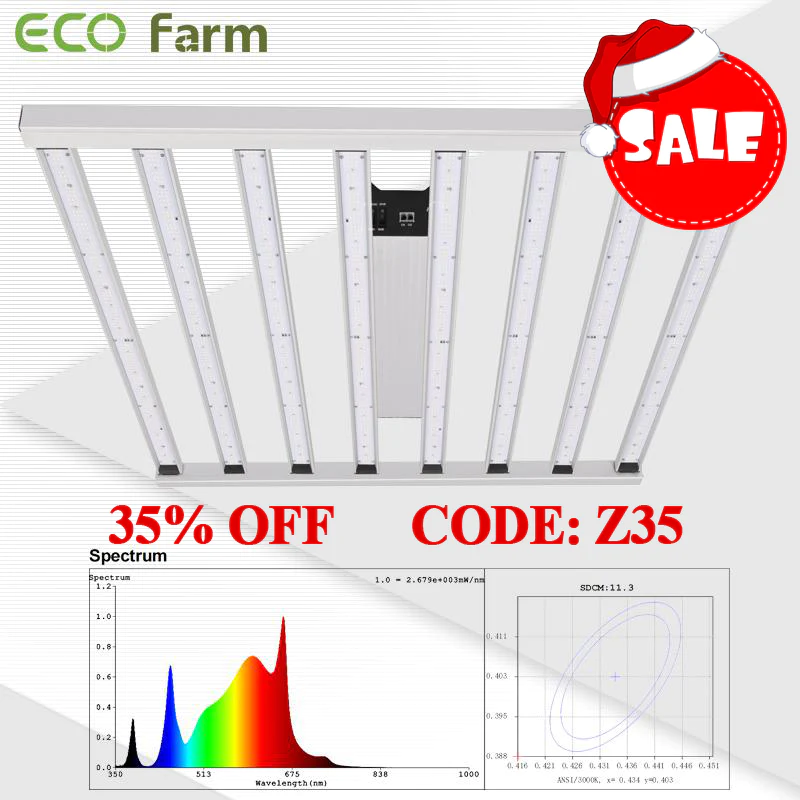
Features:
The ECO Farm grow light is equipped with SAMSUNG LM301B chip and 8 high-efficiency aluminum rods to ensure high-efficiency PPE 2.7umol/J, better heat dissipation, and long service life. Compared with old plant lights, the average PPFD is increased by 30%, and the yield and quality are increased by 50%. 8 LED growth lights, each rod is covered with high-grade glue, waterproof and easy to clean, not easy to be filled with dust. This plant growth light also uses a special dimmer, which can precisely adjust the brightness. 0–10 levels are optional. This means that you can see clear brightness levels and record while adjusting. No need to worry about differences. At the same time, it also has an ideal full-spectrum and amazing heat dissipation: excellent full-spectrum mixing of white, blue, red, and ultraviolet light, IR LED (3500K, 660nm and IR 760nm & 396nm UV), close to natural sunlight. The spectrum applies to the entire stage of indoor planting. This ECO Farm LED grow light has 3 channels control: Adjustable knob, IR switch, and UV switch.
Dio-Tech Satellite Unit 830W LED Grow Light

Features:
Dio-Tech lighting solutions are designed by growers for growers. The result of years of research and development devoted to optimizing plant growth performance. Dio-Tech is powerful enough to not only replace but completely outperform your existing HID lighting, with a lighting formula that provides the ultimate spectrum for your garden at every stage of the plant growth cycle. The Dio-tech 830W LED combines a high-end Osram chip with a built-in dimmer. Dio-Tech 830 starts in F1 mode (flowering spectrum) but has a wide spectrum for excellent vegetative growth.
Mammoth Lighting Fold Series MF08 LED Grow Light
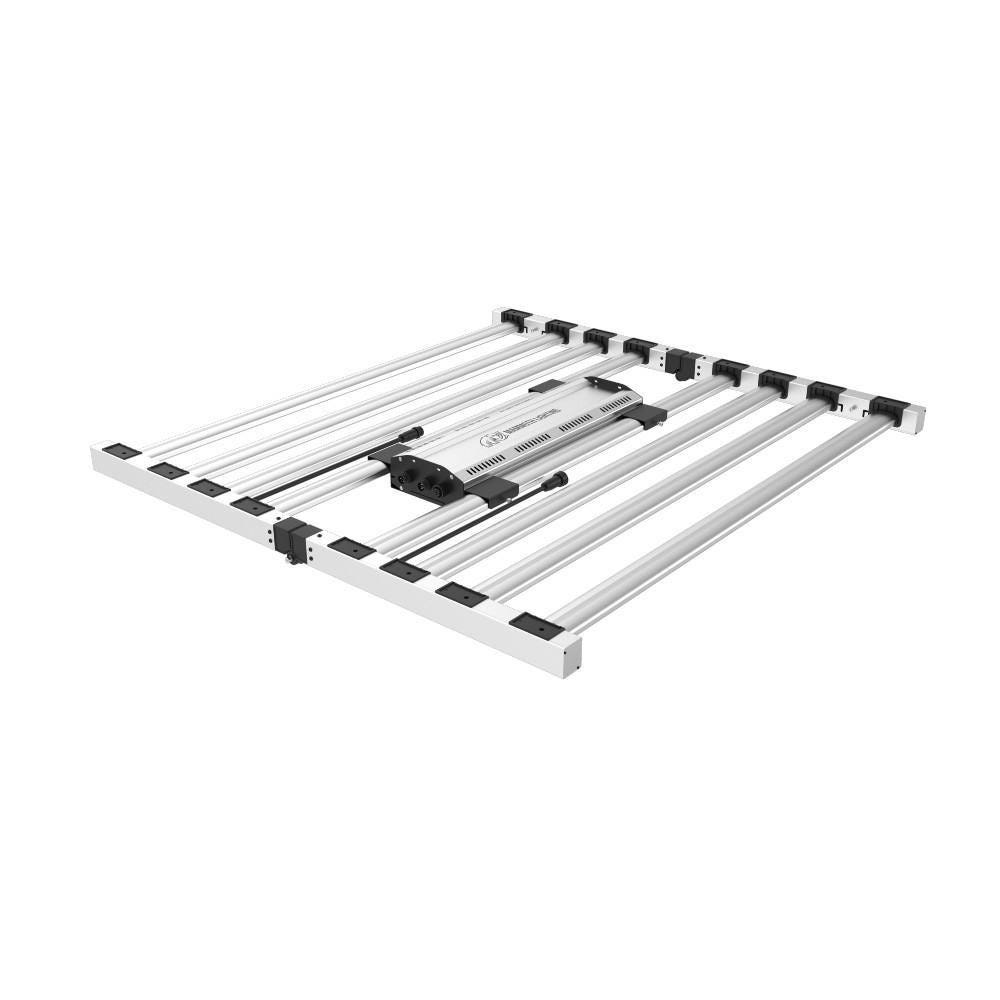
Features:
The Mammoth LED grow lights are built with high-quality Samsung diodes. The lights encompass a continuous range of wavelength from blue and green to red, creating a light blend matching the natural sunlight. 469 Samsung LM301B diodes per bar delivers the industry’s Highest PPFD and Yield. Mammoth customized their light spectrum to optimize plant growth and increase yields while consuming less energy and reducing operating costs compared with traditional horticulture technologies. With a proprietary blend of 3000k+5000k+660nm+730nm, for full cycle growth. 730nm speeds up flower (~5 days) and adds up to 5% more yield.
Buying Considerations for Grow Lights
Spectrum
All light, visible and invisible, exists on a spectrum that is measured in nanometers. Visible light falls between 400 to 700 nanometers on the spectrum, which is also known as Photosynthetically Active Radiation (PAR). PAR is the wavelengths of light that plants can actually use for photosynthesis.
When it comes to grow lights, you have likely heard of “blue light” versus “red light.” These two types of light refer to different subsections of PAR that are used by plants during photosynthesis for specific purposes. “Blue light” exists in the 400–490 nanometer range and helps support vegetative growth, while “red light” exists in the 580–700 nanometer range and helps support flowering and fruiting.
Many grow lights available on the market today are “full-spectrum” lights, meaning that they cover the full PAR spectrum, plus a little extra. However, you will also see grow lights that are specifically manufactured to cover the blue or red light ranges as well, which can help you to tailor the light to your specific growing goals if desired.
Light Output
Light output refers to the strength and intensity of the light being emitted from a light source and is measured in lumens. The higher the lumen rating, the brighter the light. For succulents, a grow light with a lumen rating between 2300 to 9300 (similar to full daylight) per square foot is sufficient.
Power and Efficiency
The amount of electricity used by a grow light is measured in watts. To understand the efficiency of a grow light, you will need to understand the lumens (light output factor) per watt. The higher the number, the more efficient the light is in terms of energy consumption.
Cost
Grow lights come in a wide range of sizes, strengths, and applications, so the cost that you can expect to pay for a grow light also varies depending on what you need it for. If you are looking for a small light to support the growth of one or two plants in your home, you can likely find a grow light for between $50-$100 that will do the trick. Alternatively, if you are hoping to use grow lights to grow lots of succulents in a larger space, you may be looking at a heftier investment — several hundred dollars at least.
Conclusion
LED grow lights can definitely be used to grow plants indoors, and it gives you the opportunity to keep growing through the winter. There are different types of LED lights, keep in mind that some are better than others. Your indoor plants do need as much sunlight as your outdoor plants, so you need to choose your LEDs carefully to light up.
The type of LED lights you choose will also determine the quality and quantity of growth your plants will experience.
5 Best LED Grow Lights for 4x4 Indoor Grow TentS (2022 Updated)
August 18, 2022
The best LED grow lights for indoor plants give precise control over your indoor plants. Speed up flowering time or customize your plant structure for better rooting and easier management by wirelessly adjusting your custom full-spectrum grow lights. These lights are closest to the dynamic properties of sunlight. The best LED grow lights for indoor plants, are designed for scientific or commercial applications that require precision.
Can Plants Survive Without Any Natural Light?
The answer is a tricky one, as plants will always benefit from natural light over artificial. For most hobbyist growers, indoor lighting will not be enough to keep your plant as healthy as it would be outside. However, with the best equipment, it is possible.
The main problem with growing plants indoors is the cost involved. Buying the right lamps and bulbs that replicate the sun can get very costly.
Likewise, the amount of electricity needed to replicate the sun will be very high. Your electricity bill will also be astronomical.
The best use of indoor lighting is with plants that need a little bit of extra light. For example, countries in the extreme north or south of the planet can have very long winters in which the sun is hardly ever out. During this time extra light might be needed for a temperate house plant.
Best LED Grow Lights Recommend
ECO Farm DBL5000 Full Spectrum LED Grow Light 480W
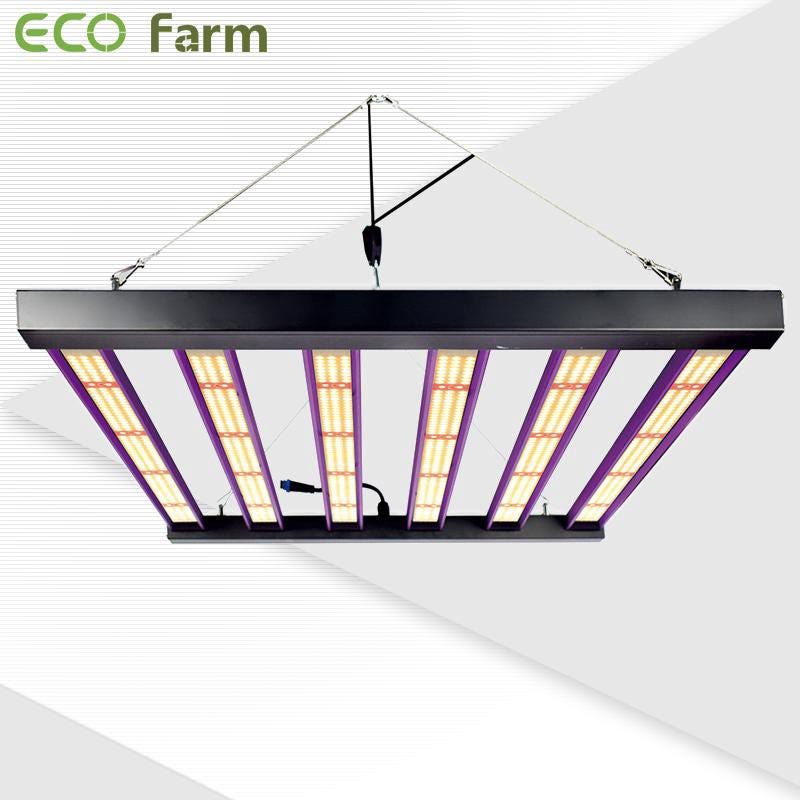
Features:
This ECO Farm LED grow light uses the most advanced design to effectively expand the light area. At the same time, the illumination is more uniform. This grow lamp makes the effective PPFD of our plant light improved, and it can also make the light more concentrated. No longer worry about heat dissipation even with high power. The grow light adopts aluminum cooling plate made of advanced small molecular material, plus a small heat sink for each chip to achieve excellent heat dissipation. All of these designs made heat efficient dissipation. No fan, no noise. The LED growth lamps have a low energy consumption and there are no problems with heat generation. So you can leave the lamp on for longer times. The plant lamp burns for up to 50,000 hours, 10 times longer than conventional light bulbs. Adequate energy consumption. This grow lamp is suitable for the indoor plant seedlings grown in a hydroponic greenhouse at your home or your office. It helps to accelerate the growth of different plants for all stages, such as succulents, tomatoes, peppers.
Spider Farmer SE5000 480W Full Spectrum LED Grow Light
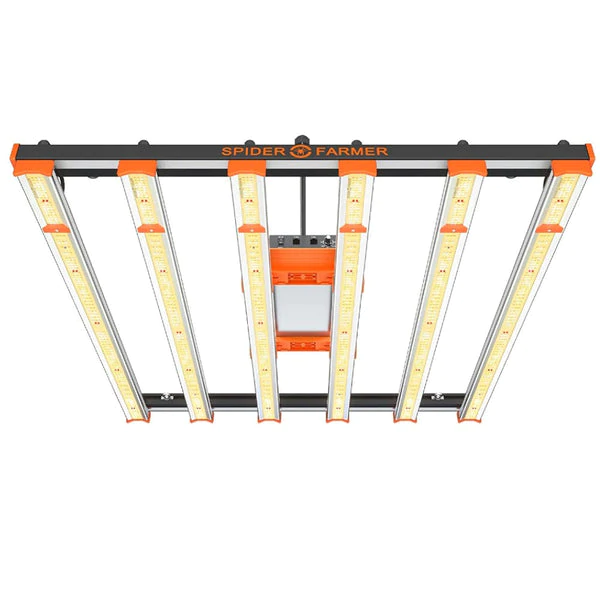
Features:
This Spider Farmer LED grow light features a uniquely designed 6 extended LED strips that provide more even canopy coverage, especially on the outer edges of the growing area. With 1680 SAMSUNG LM301B diodes, the SE5000 Led Grow Light consumes 480 watts at 1333 umol/s, achieving an impressive PPE of 2.75 umol/J, covering a high yield full-cycle growth of 4'x4'. The full spectrum (380–410nm, 660–665nm, 730nm, 3200–4200K, 4800–5000K) is ideal for vegetable flowering to suit every stage of the plant cycle. The dimmer knob is ideal for growers to adjust the light intensity for different growth stages. The daisy chain feature allows you to connect up to 30 spider farm grow lights — dimming multiple lights at the same time.
Mars Hydro FC-E 4800 480W LED Grow Light
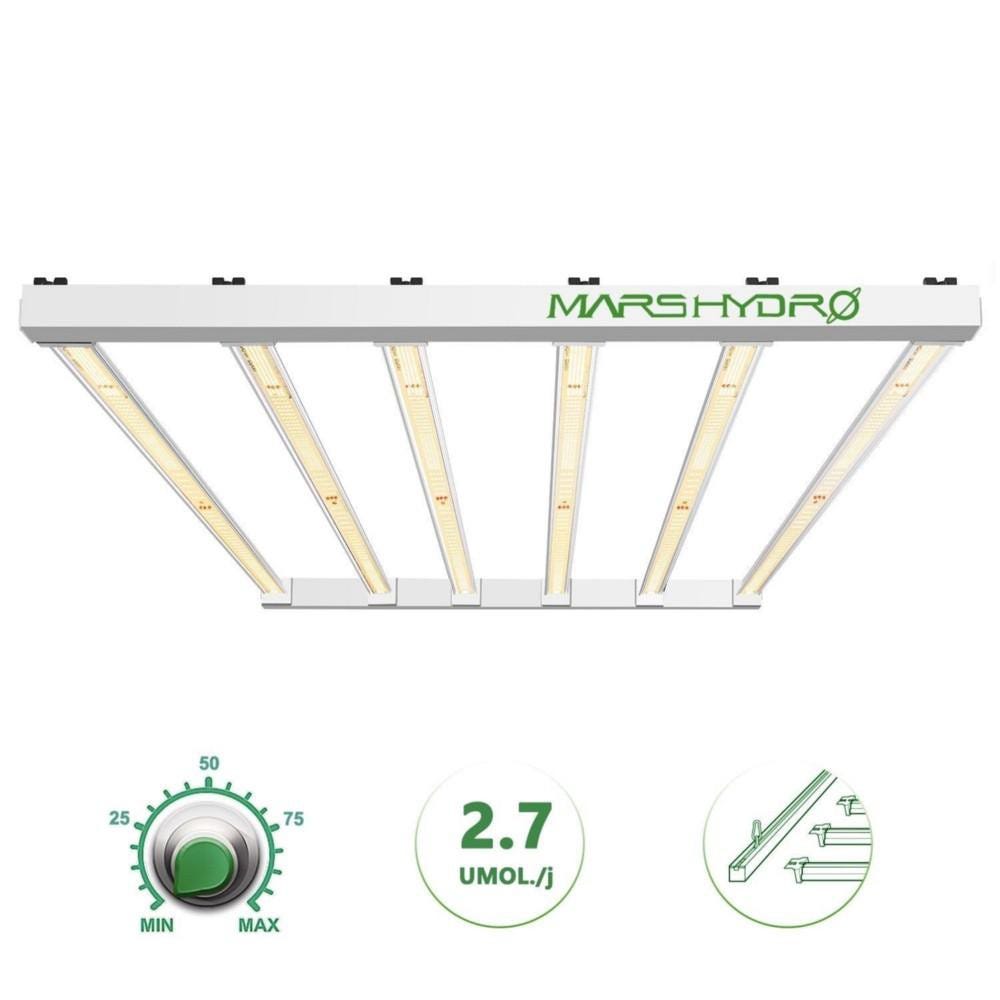
Features:
This MARS HYDRO LED grow light features 2646 BridgeLux diodes, market leading 2.8 µmol/J PPE, max yield/watt 2.5g, 480 watts, smaller footprint, better crop quality and more cost-effective. Built-in removable rod spacing and dimmable light allow precise dynamic PPFD control for each plant growth stage, the FC-E4800’s easy-to-install removable rod provides uniform, adjustable PPFD levels throughout the plant canopy, ideal for more uniformity density of buds. Detachable power supply can be remotely mounted on the side of a grow tent/shelf or on an adjacent wall to remove heat from the grow space; true aluminum radiator and 6 ultra-thin passive cooling strips (thinner and larger surfaces ) produces less heat and lowers electricity bills by 50% than HID lights!
Viparspectra KS5000 500W LED Grow Light
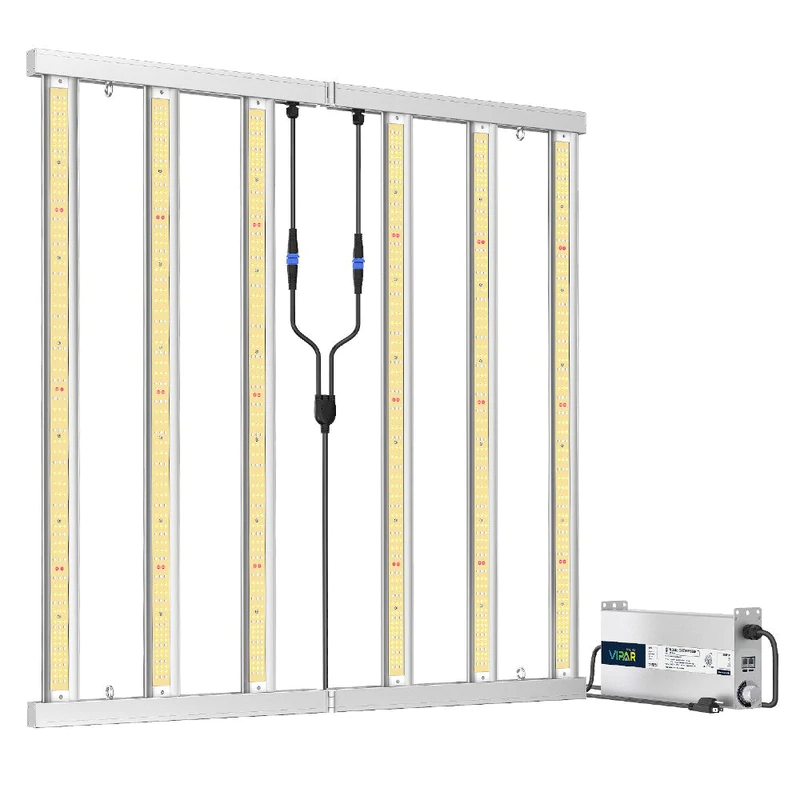
Features:
VIPARSPECTRA LED Grow Light uses market-leading Samsung LM301H diodes (3.10 μmol/J) and Osram 660nm diodes, more energy-efficient LEDs that increase crop yields and save operating costs. High-end components give the KS5000 incredible performance. The KS series is designed for individual or commercial growers who want to optimize their growing space for maximum crop yield while producing the highest quality crops. The KS5000 Dimmable Grow Light with Daisy Chain allows you to connect up to 100 KS5000 grow lights to your commercial grow, horizontal and vertical farming, greenhouse grow, pipe grow, hydroponics, 4x4 grow tent. A built-in dimmer allows you to dial in the perfect PPFD for your plants at all growth stages. The KS5000 features a detachable power supply that can be remotely mounted on the side of a rack or on an adjacent wall to dissipate heat from your grow space.
TotalGrow MH Lumyre 480W LED Grow Light
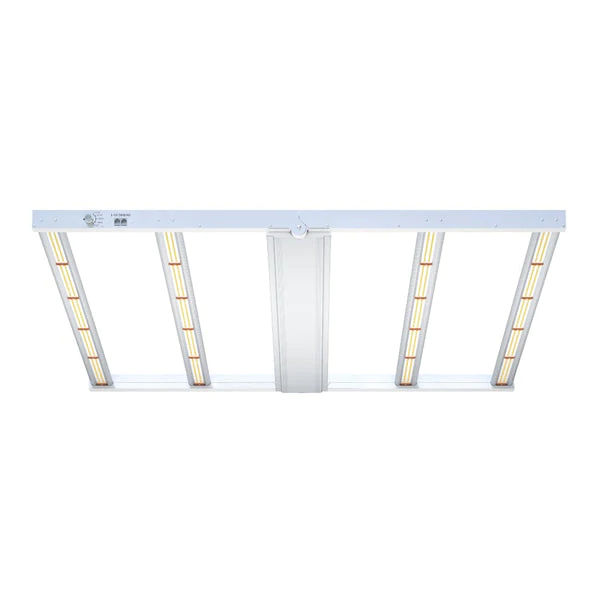
Features:
TotalGrow LED grow lights feature multiple high-intensity light strips in a slim profile and built-in power supply to distribute the ideal light intensity evenly across your growing area to meet your growing goals. Superior, customizable full spectrum supports efficient, high-quality growth of any life stage and crop variety. This plug-and-play solution with direct daisy chaining is easy to implement, has low up-front and ongoing costs, and sustainably produces high-quality crops. The efficacy of this LED grow light is as high as 2.8 μmol/J to meet the light intensity your plants need. Robust, reliable, ideally shaped design for ease of use and excellent uniformity.
Choosing the Best Lights for indoor plants
Not all grow lights will yield the same outcome for your plants. Make a well-informed choice and consider the following:
Type of Light
One of the most important is the type of light to use. The latter impacts energy efficiency and effectiveness.
LED: This is the best option for growing plants. They produce no or minimal heat and are also known for their energy efficiency. They also contain fewer heavy metals compared to other types and have no electrical interference.
Fluorescent: It uses an electric current to activate mercury vapor. In turn, the light generates short-wave ultraviolet. Meanwhile, the photons collide with a phosphor coating, which is then responsible for producing light. However, it contains a toxic coating and is not long-lasting.
Incandescent: A traditional option for indoor lighting, this is no longer popular today. Incandescent lights have a wire filament that electric current heats. One of the problems with this lighting option is that it generates excessive heat.
Colors
The colors or spectrum affect the compatibility of the light to the plants, especially in terms of its growth stage. For the best results, we recommend picking one that generates a full spectrum. The combination of all colors will support the healthy growth of your plants.
Wattage
One of the most important technical specifications to look at is the wattage, which measures the amount of electricity the light uses at a specific point. The higher the wattage, the brighter the light. Meanwhile, the lower the wattage, the lesser power it consumes. Ideally, each light should have at least 20 watts.
Energy Efficiency
Lights for plants operate continuously or for an extended time. This makes it vital to pick one that has incredible energy efficiency, so you can save money on electricity. LEDs are great because they are known for their minimal power consumption while maintaining superb performance.
For best yields, you’ll also need the best soil for your plants.
How to Maintain Your Grow Light for Long-Term Usage
When you are growing indoor plants, grow lights are one of the most critical elements of your entire indoor setup. They play an important role because the light that comes from them acts as a replacement to the natural light of the sun. However, this light, unlike the natural sunlight, can be controlled and manipulated based on your needs. This is why it is essential for you to make sure that your grow light remains in top condition and lasts you for a long time. Having a good performing grow light gives you a direct benefit when growing plants.
Here are some tips that you can follow to ensure that your grow light remains well-maintained for a long-term period.
Avoid Excessive Daisy Chaining
One of the biggest mistakes that people often tend to make while using grow lights is that they go overboard with daisy chaining, especially when using them in a larger setup. Generally speaking, it is not advised to daisy chain more than 3 grow lights together. For the fourth one, we recommend using a separate, dedicated, plug point instead of having it connected to the other three lights. Sometimes, daisy-chaining can cause an overload on the power source and can even lead to short circuits or fire-related damage, which are dangerous situations!
Ensure Proper Temperatures
Another thing that needs to be kept in mind is the temperature of the area that you are growing in. If you are growing in a hot place, we recommend you to make use of grow lights that emit very little heat (check out some 2022-build fanless LED grow lights for that). Besides the lights heating up, make sure you are using sufficient cooling mechanisms to keep the grow area cool because heat can often damage the lights and cause the circuits to melt — a damage that can take a long time to fix. If not treated in time, this can even result in damaging your plants as heat is bad for your plants as well. We recommend using air conditioning to ensure lower temperatures.
Keep Them Protected From Water
Just like you would with any other electronic item, make sure that your grow lights remain protected from water too. Water and electric devices don’t go together and water can be extremely damaging to them. Given that plants need a lot of water to grow, and nutrients are also provided to indoor plants along with the water, you will need to be extra careful that you don’t accidentally spill over any water on them. You can find a number of waterproof grow lights in the markets, which are considerably safer to use vs regular grow lights that don’t have any such security measure.
Keep Them Away From Dust
Dust is often the biggest enemy of most electronic items. The problem that dust causes is that it does not allow the heat to escape and can often damage (the often delicate) internal mechanics of the grow light. Dust traps heat inside the light and heat leads to a damage in the circuits. To ensure that your grow lights are remaining safe from dust, try cleaning them up with a brush from time to time, or just make sure you are using them in a dust-free environment. This is usually something that isn’t that big of a problem when you use grow tents, but if you are using lights outdoors, or in a grow room with open ventilation, you might have to watch out for dust. Make sure you’re cleaning your lights from time to time to avoid any dust-related damage.
Don’t Move Them Around Too Much
Grow lights, especially the modern-day panel-based variants, aren’t the most durable ones. You have to move them around very carefully to ensure that they do not bump into something or accidentally fall down. This is a general practice that applies to pretty much any piece of electronic item that you are working with, try not to bang it around too hard and it will work just fine.
Conclusion
Every grower wants the perfect solution for his beloved plants. It doesn’t matter if he grows one or more. In the end, the yield per square meter is what matters. For maximum yield, you must understand the growing requirements of your Grow tent and then purchase LED grow lights accordingly.
Here I must say that LED grow lights can solve your problem by producing the best light spectrum to control the temperature inside the grow tent. Therefore, only buy the one that fits best among the many Grow lights.
And, hopefully, I can help you identify the most important equipment for growing plants. I know you’ve found the best light for your grow tent!
The Ultimate Guide to the Best Indoor LED Grow Lights in 2022
August 16, 2022
LED lighting is the newest artificial lighting option on the market, and there is a lot of hype surrounding it. If you’re an indoor gardener, you might be wondering if LED lighting is better than traditional fluorescent and incandescent lights. We’ve done the research so we can answer your most pressing questions about LEDs and plant growth so you can make an informed decision that fits your needs.
How do LED grow lights work?
In nature, plants get the light they need to perform photosynthesis from our primary light source: the sun.
But there is no rule that says your plants have to get their light from our sun. Indoor LED grow lights use artificial light to provide plants with the daily light they need to grow.
Scientific research has shown that plant growth changes depending on the color of the light they are exposed to. Full Spectrum LED Grow Lights include all visible light colors and mimic sunlight very well. LED grow lights allow you to create a thriving garden indoors without relying on plenty of natural sunlight.
ECO Farm Z8–800 Samsung LM301B LED Grow Light With Separately UV+IR Control

Features:
The ECO Farm grow light is equipped with SAMSUNG LM301B chip and 8 high-efficiency aluminum rods to ensure high-efficiency PPE 2.7umol/J, better heat dissipation, and long service life. Compared with old plant lights, the average PPFD is increased by 30%, and the yield and quality are increased by 50%. 8 LED growth lights, each rod is covered with high-grade glue, waterproof and easy to clean, not easy to be filled with dust. This plant growth light also uses a special dimmer, which can precisely adjust the brightness. At the same time, it also has an ideal full-spectrum and amazing heat dissipation: excellent full-spectrum mixing of white, blue, red, and ultraviolet light, IR LED (3500K, 660nm and IR 760nm & 396nm UV), close to natural sunlight. The spectrum applies to the entire stage of indoor planting. This ECO Farm LED grow light has 3 channels control: Adjustable knob, IR switch, and UV switch.
Mars Hydro FC 8000 LM301H LED Grow Light
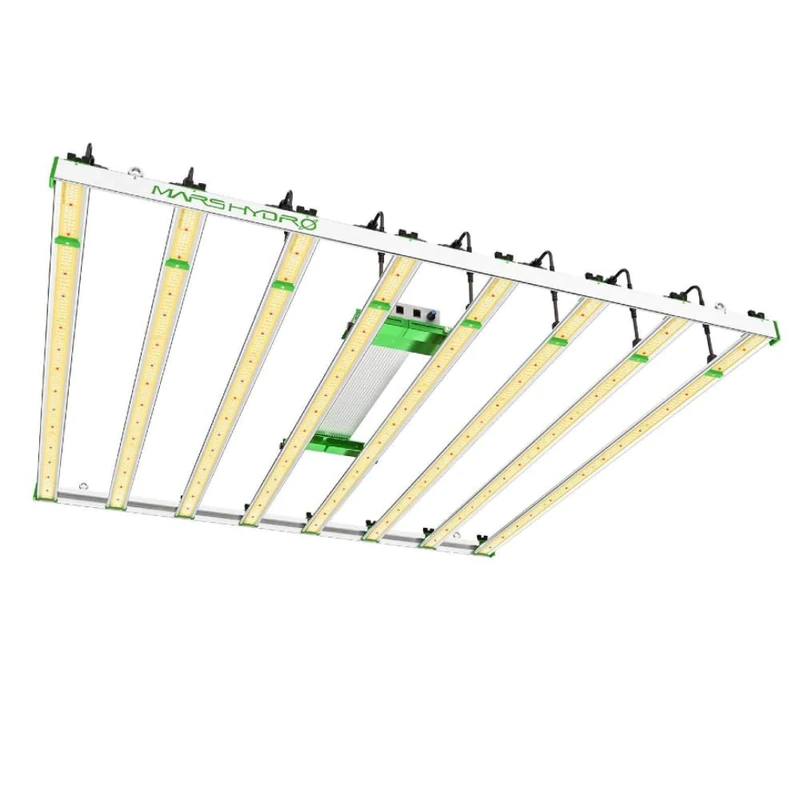
Features:
The Mars Hydro LED Grow Light is designed and engineered with commercial cultivators in mind, but is also perfect for nearly any personal grow. This powerful light delivers impressive results with an average uniform PPFD of 1500 μmol/s, sufficient to activate 100% photosynthesis and achieve maximum yield with or without CO2. The FC 8000 is the ideal light for almost any indoor growing scene, including single- or multi-shelf vertical farms, thanks to its versatile design and Samsung LM301B diodes for stronger canopy penetration and more consistent output. The FC 8000 LED Grow Light provides uniform standard readings thanks to an excellent 12-band spectrum, including IR, for maximum photosynthetic response. With enhanced blue and red light, plant growth increases with higher yields, larger flowers, and a more potent, higher-quality end product.
Spectrum King Phoenix 840W LED Grow Light
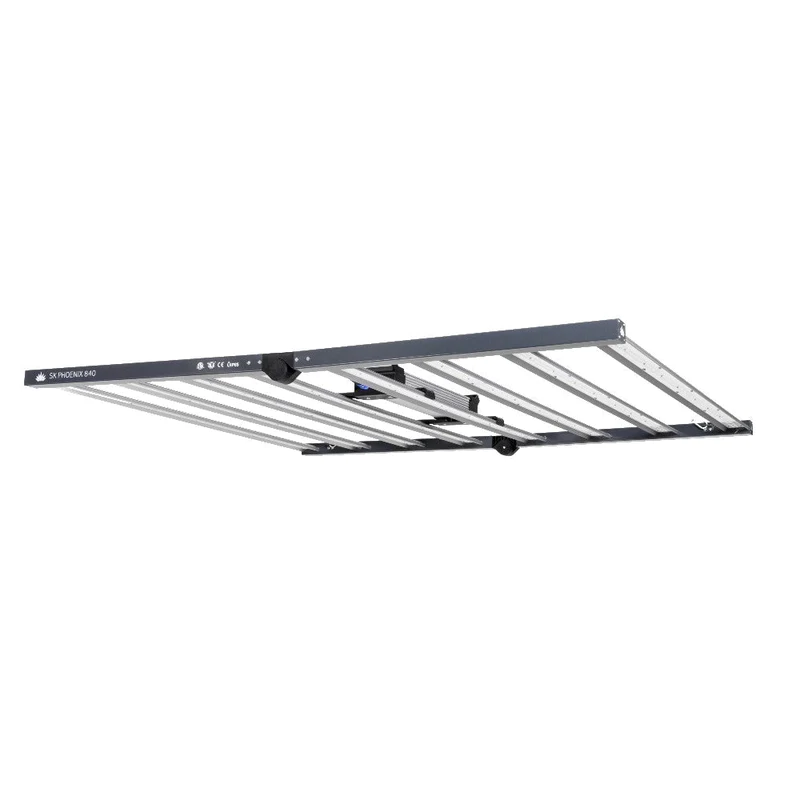
Features:
Spectrum King’s Phoenix 840W is ideal for photon-hungry crops that can handle strong light. With 16% less wall power than standard HPS fixtures, the 840 provides some decent output compared to other fixtures while still saving electricity and heat. Spectrum King’s custom spectrum is tested and customized to maximize plant and flowering cycle growth. The intensity of this dimmable light can be as low as 10%, enabling growers to simulate a sunrise/sunset effect. Spectrum King’s innovative Cryo-Therm cooling technology features an ultra-thin profile that maximizes airflow and minimizes microclimates. The Phoenix 840 grow light is optimized for single or multi-level planting close to the canopy.
Things to consider before buying the LED grow light
Energy efficiency
To save money, some growers choose HPS solutions because of their lower upfront costs. However, LEDs are more energy efficient than HPS solutions. HPS solutions generate light through the ignition of gas within the luminaire. This causes the HPS solution to generate a lot of heat. Although a lot of energy may be injected into an HPS solution, most of that energy is converted into heat, not light for crops. On the other hand, the electro-optical conversion efficiency of LEDs is as high as 90%. So while the upfront cost of an HPS solution may be lower, over time LEDs can save growers money by wasting less energy to heat.
A good piece of advice for growers is to always keep an eye on the efficacy of the lights. Efficacy is determined by dividing lumens by watts. Lumens measure the amount of light emitted per second. One watt is equal to one joule of energy per second. The higher the efficiency, the more energy efficient the lamp, and therefore, the more sustainable it is.
Longer service life
Quality LED lights have an expected lifespan of over 50,000 hours. HPS solutions typically only last about 10,000 hours. For the sake of comparison, the LED lamp has a lifespan of over five years, while the HPS solution has a lifespan of just over a year. This results in fewer replacements for growers using LED lights. Fewer replacements means fewer resources are used in the manufacturing process, less packaging material, and less shipping to carry replacement lights. Overall, this reduces the carbon footprint of cultivation.
In addition to these sustainable benefits, requiring fewer replacements is another way LED lights can save growers money. LED lights are easy to maintain. While the upfront cost of LED lights may be higher, they only need to be replaced for a fraction of the time. As a result, LED lights reduce expensive maintenance and replacement costs for growers. Able to withstand the heat and humidity of a greenhouse environment, a simple routine cleaning of dust and debris inside and out of LED lights can ensure they work efficiently for years to come.
Recyclable non-toxic materials
LED lights do not contain many hazardous chemicals, such as mercury, that can be hazardous to the environment and public health. LEDs are made from small diodes made from thin layers of semiconductor material. One of the main advantages of LED lights under current regulations is that they can be easily recycled along with other electronics. Recycling reduces the amount of waste that ends up in landfills, prevents pollution and saves energy by reducing the need to collect new raw materials.
Like any other business, products have an environmental responsibility to make sustainable decisions and be part of solutions to protect the planet. LED grow lights are energy efficient, recyclable and have a longer lifespan than the competition — plus are a more cost-effective option. For anyone in the indoor farming industry, making the switch should be a breeze.
Conclusion
When it comes to LED Grow lights, I always say you get what you pay for. However, if you’re on a tight leash and only plan to grow one type of plant, one of the above grow lights may be your best bet.
How to choose the Best 1000W LED grow lights for Indoor Growing?
August 15, 2022
When you want to grow plants indoors, you need LED lights depending on the size of your grow room. As we all know, there are various kinds of glowing LED lights on the market.
Such as 600W, 1000W, 1200W, 1500W, 2000W and 3000W. These are just a few of the many light-emitting capable lamps available on the online marketplace. Here we will get a review of the best 1000W LED grow lights useful for plants’ growth. We’ve picked the best LED grow lights for 2022. This is where you need to grow your plants better.
What spectrum of grow lights do plants use?
For those confused, the spectrum defines the temperature wavelengths of grow lights. The required spectrum depends on the type of plants you grow. So make sure you check the same accordingly and decide which spectrum works best for you.
How to keep LED grow lights cool?
To keep your grow lights cool, make sure to buy lights with built-in fans or very cool cooling systems. If you’re still facing heating issues, you may need to use an external clip-on fan to keep things cool. Another benefit of using an external fan is that it helps create a breeze, which is great for stem development. Finally, if you grow a lot of plants, you might also want to consider a mini air conditioner, or even a regular one.
ECO Farm ECOZ 1000W Samsung 301H Chips LED Grow Light With Separately UV+IR Control
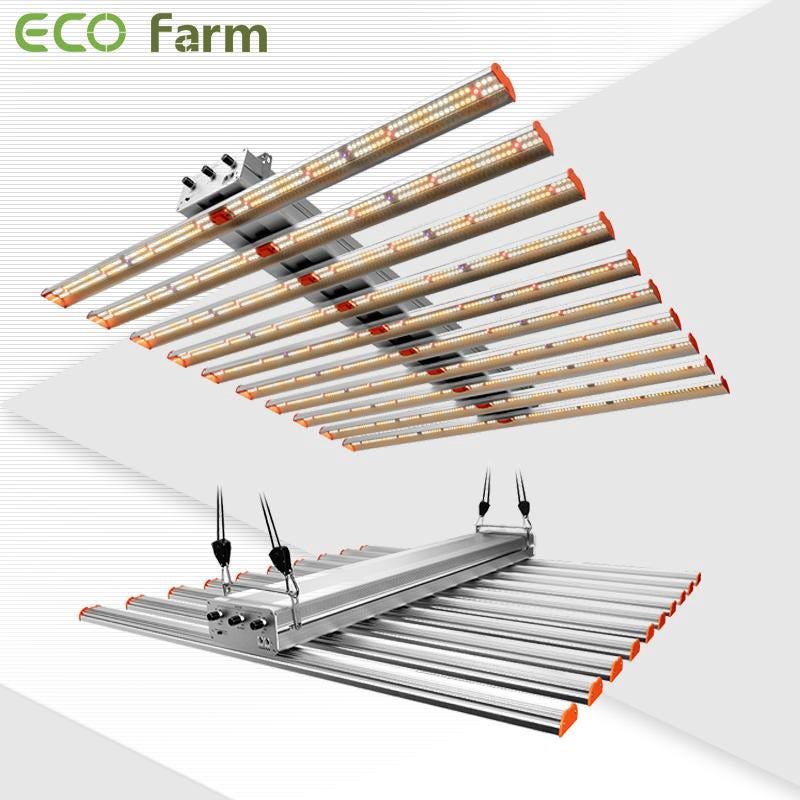
Features:
The ECO Farm grow light is equipped with Top Bing Samsung & Osram Chip and brand driver to ensure high-efficiency PPE 2.9umol/J, better heat dissipation, and long service life. Compared with old plant lights, the average PPFD is increased by 30 %, and the yield and quality are increased by 50%. At the same time, it also has the most trustworthy full Cycle Sunlike Spectrum, close to natural sunlight. The spectrum applies to the entire stage of indoor planting. This ECO Farm LED grow light has independent control of the VEG switch, Bloom switch, and UV switch. VEG dimmer controls white light 5000K, one Bloom dimming The device controls white light + red light (3000K+660nm+730nm), and the UV dimmer controls UV 395nm. And there are optional knobs and touch screen controllers.
Spectrum King Phoenix 1050W LED Grow Light
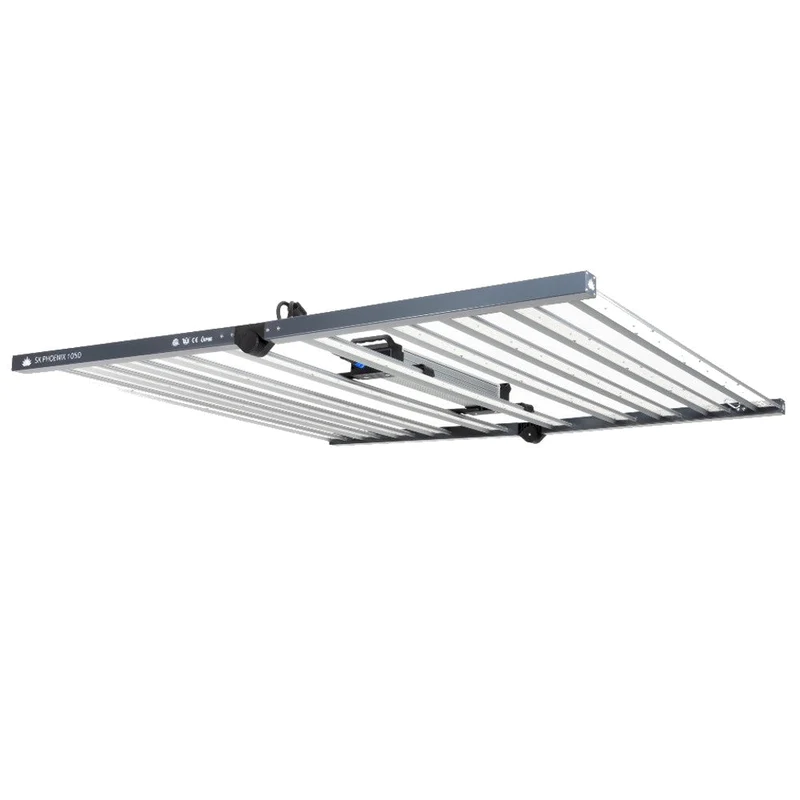
Features:
Spectrum King’s Phoenix 1050W LED Grow Light is a grow lighting beast that unleashes 1050 watts of sun-like light in areas up to 6' x 6', unleashing the ultimate output for your grows. Designed to hang high, the Phoenix 1050 recreates the sunniest summer days for plants that never seem to get enough light. SK Cryo-Therm cooling technology enables an ultra-thin profile that allows maximum airflow and minimizes microclimates. Optimized for single or multi-tier planting near the canopy. For growers who need the biggest, brightest LEDs, the Phoenix 1050W is for you.
Iluminar iL9x 1000W LED Grow Light

Features:
If you’re looking for more power for your indoor grow area, then you need the iLuminar iL9x LED Grow Light. The iL9x works best for commercial-sized growers who need all the light they can get to cover large areas with low clearances. Featuring a tuned spectrum for astonishing results, the iL9x beats leading brands with its added diodes. The iL9x also has a full spectrum array that works in both vegetative and flower stages. If you need high umol but in low clearances, the iL9x can cover your needs.
An Ultimate Buyer’s Guide
To keep a regular check on the plants growing inside the tent, you will need an efficient LED light. If it’s both cheaper and efficient, it’s an added advantage. People who grow multiple plants can buy additional LED lights to observe the plant growth. Here are a few useful tips you should consider before placing an order on the cheapest LED grow lights.
Brightness & number of lights
Considering the cheapest LED grow lights, the first thing that comes to our mind is the brightness. The main purpose of installing grow lights inside your grow room is for the brightness to observe what’s going on inside the grow room. So, make sure the intensity of the LED lights caters for your plant requirements. It must not be too bright, as it can disturb plant growth by producing enormous heat. It should also not be dim as you will face strains in observing the plant growth. The light intensity should be at the optimum range, according to the grow room area. After brightness, you should also decide the number of lights you are going to purchase. The number of lights will depend on the grow room area and the number of plants. Single light would be sufficient for a small grow tent, while you’ll need two or more LED grow lights for a larger grow room.
Durability & construction
Next comes the durability of the cheapest LED lights. Make sure the lighting units are of good durable quality for a longer lifespan. You don’t want the lights to stop working after a few weeks or months. See if the lights are made of durable materials. Purchasing grow lights from a brand that provides a warranty is highly recommended as you can claim the warranty in case of any technical failures or repairs. Grow lights of good quality will last for many years. The warranty period can vary between 1 to 10 years, depending on the brand. Expensive grow lights come with a longer warranty period and high-quality materials. There are also affordable grow lights in the market with good durability and a decent warranty period. You can go through the website of the light brand for warranty details.
Light coverage area
There are different kinds of cheapest LED grow lights in the market. The coverage area of the grow lights depends on the grow room size or dimensions. The grow area size depends on every person. Some might grow plants in 4’ x 4’ area while some might grow in 8’ x 8’ area. You should buy lights according to your grow room space or size. Some of you might be confused and unaware of what kind of lights you should buy for your grow room area. In such scenarios, you can consult a professional for advice or ideas. You can also check the PPF reading and PAR chart of the manufacturer to decide the light intensity and coverage.
Budget & Brand
Decide your budget before purchasing grow lights. As the years pass, new models of LED grow lights evolve every day. Before reviewing a suitable and cheap LED grow light for your grow tent, figure out how much you can invest in them. The features, construction, design, and quality of the grow lights will also vary according to the price. You should also make sure you buy it from a reputed and trustworthy brand. It is suggested you prefer brands that provide customer support and a warranty period. You can claim the warranty if something goes wrong. This will be a good value for money.
Conclusion
Finally, grow lights should be height adjustable. To get the full potential of the light source, it should be as close to the top of the bush as possible. At the same time, lights should not be placed close to plants, as this may cause light or thermal burns. As the plants grow and develop, growers must constantly adjust the height of the lights to maintain this delicate balance.
Best 300W LED Grow Lights For Seedlings (Updated 2022)
August 08, 2022
Since all plants need sunlight to thrive, growing indoor plants can be a little difficult. That’s why you need LED grow lights to ease your work.
Well, to help you with this task, we’ve reviewed three LED grow lights that are considered top fixtures for indoor planters. So let’s not waste any time getting to know them.
What makes this type of lighting so great?
LED lighting seems to be the best choice for growing plants because they offer a wider spectrum of blue and red. These colors enhance flowering and vegetative growth. However, you should consider that LED lighting is suitable for lighting and is not the best choice for plants, as they do not provide the warmth that plants need.
ECO Farm DBL3000 Full Spectrum LED Grow Light 320W
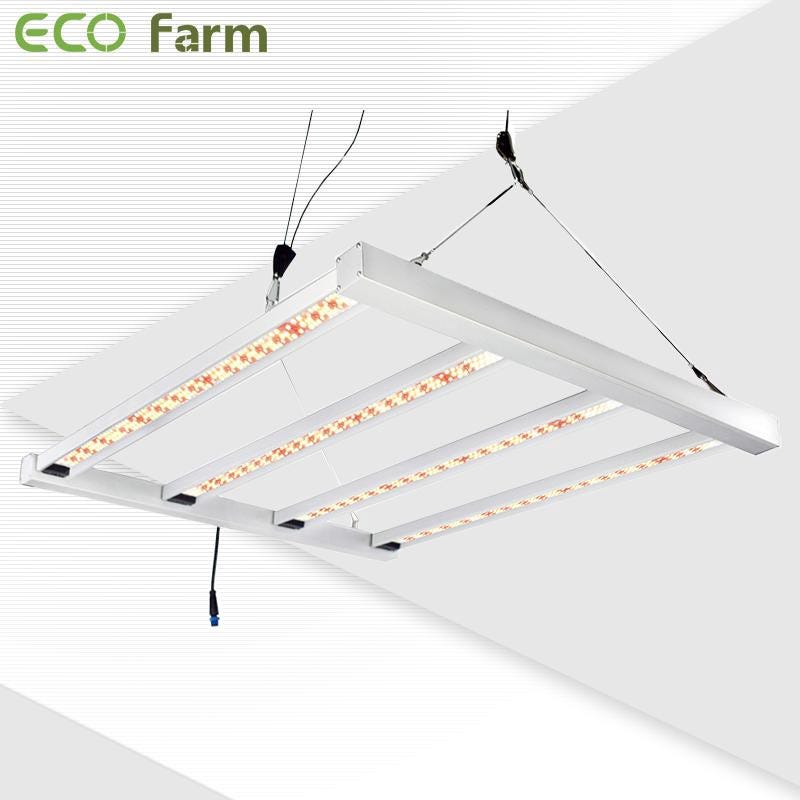
Features:
When compared to other led grow light, This ECO Farm LED Grow Light with 864 pcs SAMSUNG LM281B diodes, more than others with 790 LEDs with cheaper driver,but consumes Only 320W .Don’t settle for cheaper, weaker indoor plant lights. Our full spectrum grow light have been used by customers for their beautiful indoor plants. Yield Max spectrum with Full-spectrum (3000K, 5000k, 660nmnm, 30nm), Perfect for Density Buds. The DBL3000 LED Grow Light is a Scalable Solution for Commercial, Home, Grow Tent, Grow room, Hydroponic, Soil full-cycle growing. The LED indoor grow light has a dimming knob to adjust the intensity of light for seedling,Veg and frowering.The first choice for beginners and professional growers, Easy to Install, Ideal for High PPFD Cultivation with Single or multi-tier racking. Yield Max Spectrum and Secondary Optic Reflective Bars, Increase Your Yields & Profits 50% Without Any Extra Energy Costs.
Neocision Spectra Explorer 340W LED Grow Light-BVV
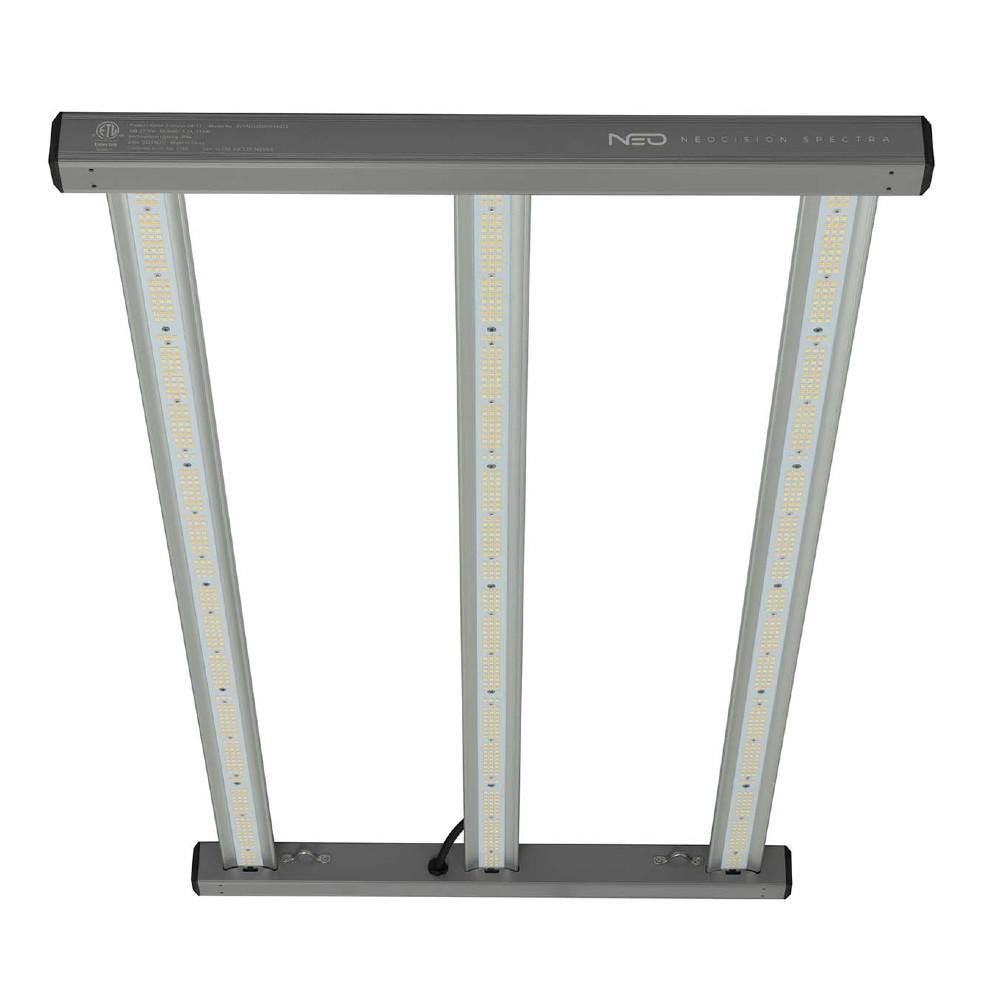
Features:
This BVV LED grow light is suitable for each growth stage of plants, and Effectively promotes plant leaves, stem growth, and flower yield. It consists full spectrum, infinite close to natural sun light. Suitable for all stages of indoor growth of all plants, accelerating flowering time and increasing yield! (Perfect for 2x4 ft.) This LED grow light uses the most advanced LED diode SMD LED technology, to provide high PAR output, high energy efficiency and long life while improving light transmission. Comparable to a traditional 600W HPS or CMH light. Save up to 70% on your electricity bill. Aviation aluminum and easy cooling stripe design, multiple air vents, to achieve excellent heat dissipation and no noise, make the lamp last longer.
Fluence SPYDR 2x 345W LED Grow Light
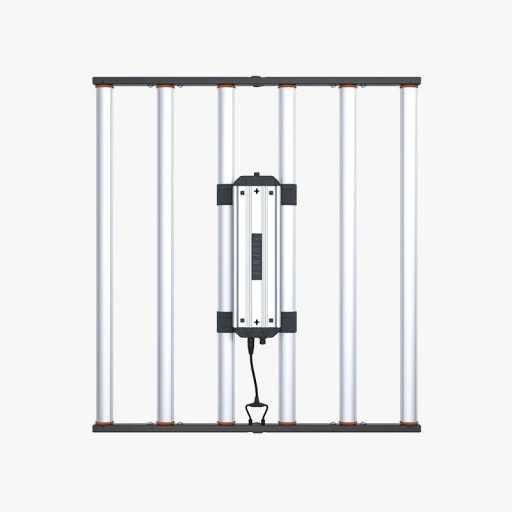
Features:
SPYDR 2x is an early development overhead lighting solution for commercial cultivation, or a full cycle overhead lighting solution for home hobbyists growing without supplemental CO2 at ambient conditions around 400 ppm. The SPYDR 2x is comparable to the previous generation SPYDRx, delivering an average of 550 µmol/m2/s of highly uniform light just 6”–12” above the canopy in a 4'x4' area. Fluence recommends mounting SPYDR 2x luminaires 6"–12" above the canopy to ensure optimal light uniformity, penetration, and flux density above the 4'x4' canopy. Fluence recommends an airflow of at least 1 ft3/S to ensure effective cooling. Proper airflow will also increase the maximum suitable operating temperature and help extend the life of the system.
Factors to Consider When Choosing LED Grow Lights
Before choosing LED lighting, you need to consider several factors. There are many advantages to having LEDs glow, they are more energy efficient and emit less heat than incandescent bulbs. LED grow lights are available in different sizes, intensities and colors to suit your plants.
So, to make sure you choose the right plants for your houseplants, here are the factors to consider.
1. Power consumption
Since LED lights are designed to emit less heat, you need to make sure they are energy efficient. Despite their lower energy consumption, high-power LED lights should be chosen carefully. But generally you should expect 25% to 30% energy savings.
2. Spectrum
The color produced by LED grow lights plays an important role in the growth of indoor plants. LED grow lights need to be user-friendly and not so bright that they hurt your eyes. Make sure you choose a product with quality lighting and easy-to-operate features.
3. Duration
How long the light lasts is also another very important factor. It is important to choose a plant that will provide your plant with 24 hours of light and make sure it can be controlled. It should come with a programmable timer so you can easily turn the lights on and off.
Conclusion
Well, here’s everything you need to know about the best LED grow lights. Guaranteeing these three options ensures a satisfactory yield at the end of the harvest season. So if you want to enjoy the best quality crops, consider these fixtures for the best experience.
3 Best 200W Quantum Board LED Grow lights in 2022
August 03, 2022
LED technology has improved everything from TVs to smartphones, but it can also help your plants. Whether you’re looking to nurture indoor plants, nurture some seedlings that will eventually make their way into your garden, or just please an outdoor plant that needs to be indoors for a while, these LED arrays can spark the photons your plants crave.
However, you can’t just light up your precious plants with an LED flashlight. You need to choose the right wattage, color and size for your indoor garden to thrive. It can be tricky, but these options provide the perfect lighting no matter what your flora looks like.
LED Grow Lights for Indoor Plants Explained
If you’re a beginner, you might wonder why your indoor plants need LED lights. To help you choose the best LED lights, you need to first understand what grow lights are and why indoor plants need them. Indoor LED grow lights are artificial lights that can help stimulate plant growth.
Plants often don’t have enough direct light and can struggle to bloom, hence why LED lights are used.
LED grow lights are handy for any indoor plant that needs direct light. Grow light not only stimulates plant growth, but also allows you to start seedlings indoors, but you do need to be aware of certain equipment, such as a built-in timer, which allows the plant to control the type of light it chooses.
LED grow lights can be quite right, so you’ll want to make sure you have a timer to provide shade when needed.
One of the main benefits of an LED grow light is that it can easily fit into a limited space and still help your plants thrive. LED grow lights also reduce the need for chemical and pesticide treatments to plants, as the grow lights are less susceptible to pests.
ECO Farm ECOR Samsung LM301H 240W Dimmable Quantum Board
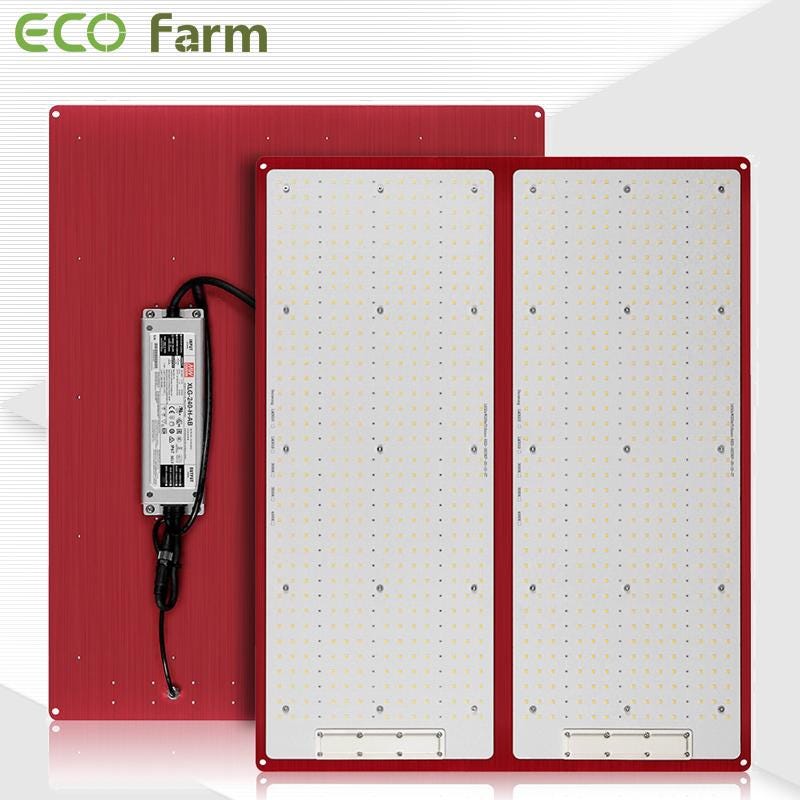
Features:
This ECO Farm LED Grow Lights utilize the latest in high yielding LEDs technology today-Samsung LM301H 3500K diodes, high Energy Efficiency with 2.8 umol/J, delivers powerful light output and uniform canopy penetration to resulting maximum higher yields. Only consumes 240w, running 50% less power than the HPS or other SMD LEDs or Blurple lamps. The diodes arrangement gathered at the edge makes the PPFD more uniform, and the dimming knob be adjusted the light intensity at liberty. Multi-light Connection with unified dimming especially beneficial for large area of indoor growing and commercial planting. Excellent full spectrum- white, red, IR and UV(3500K, 660nm and IR760nm&390nmUV). 3500K diodes providing more reddish light and the 5000K providing more blueish. The 660nm red and IR light is especially useful during bloom, where it speeds up flowering time and boost yields. Turn your seeds into your own supply. And the light looks fairly natural, so it’s good for accurately monitoring plant health.
HLG 200 Diablo 200W Quantum Board LED grow light
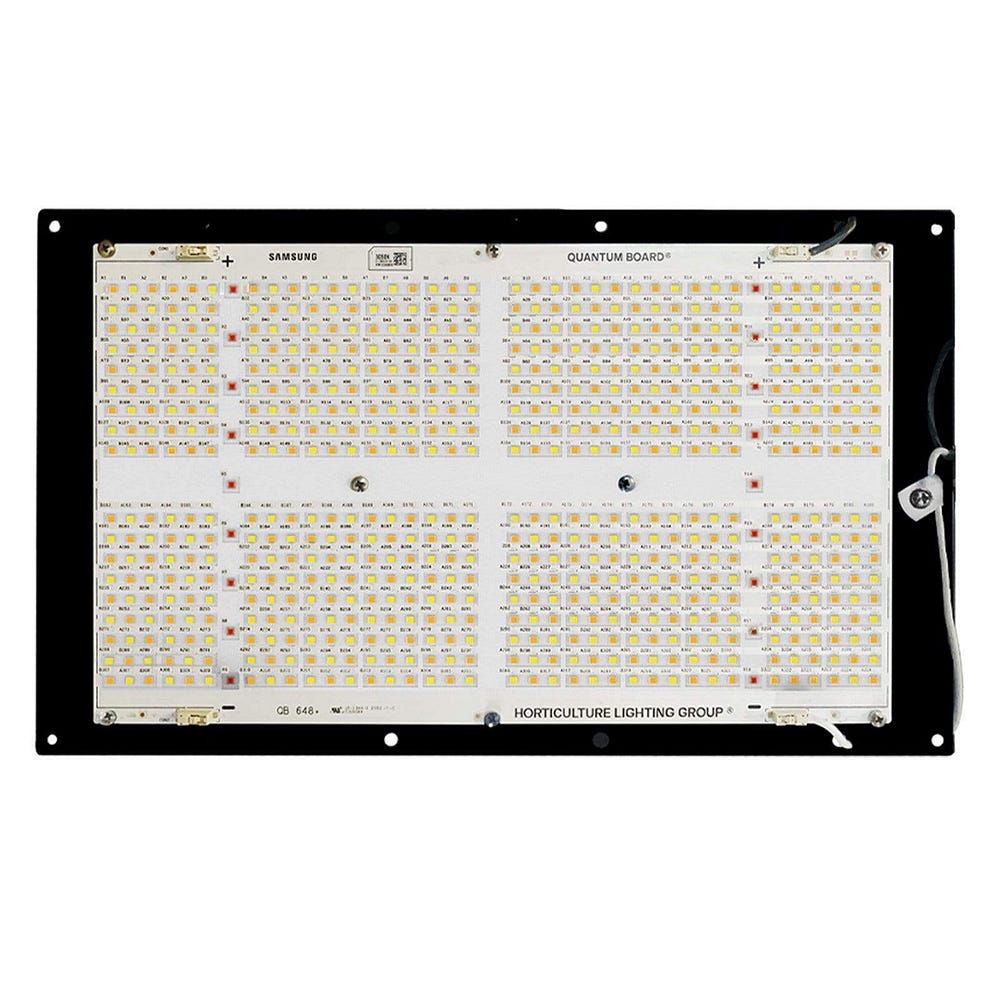
Features:
This HLG grow light is a 200W quantum board LED grow light, powered with the custom QB648, a LED Module designed by Horticulture Lighting Group®. Each board has 648pc Full Spectrum LM301H LED’s and 18 pc Deep Red 660nm LM351H leds that is ideal for Veg and Bloom. The QB648 Diablo has the highest quality and efficiency in the Quantum Board® line. This grow light is designed for low ceiling heights or vertical racksand it has a reliable passive-cooled design. Better canopy light penetration with diffused light. It produces mild heat, but ambient heat around this light is very low, so there is no need to worry about burns or damage to your plant; you can place the lamp directly above your plants.
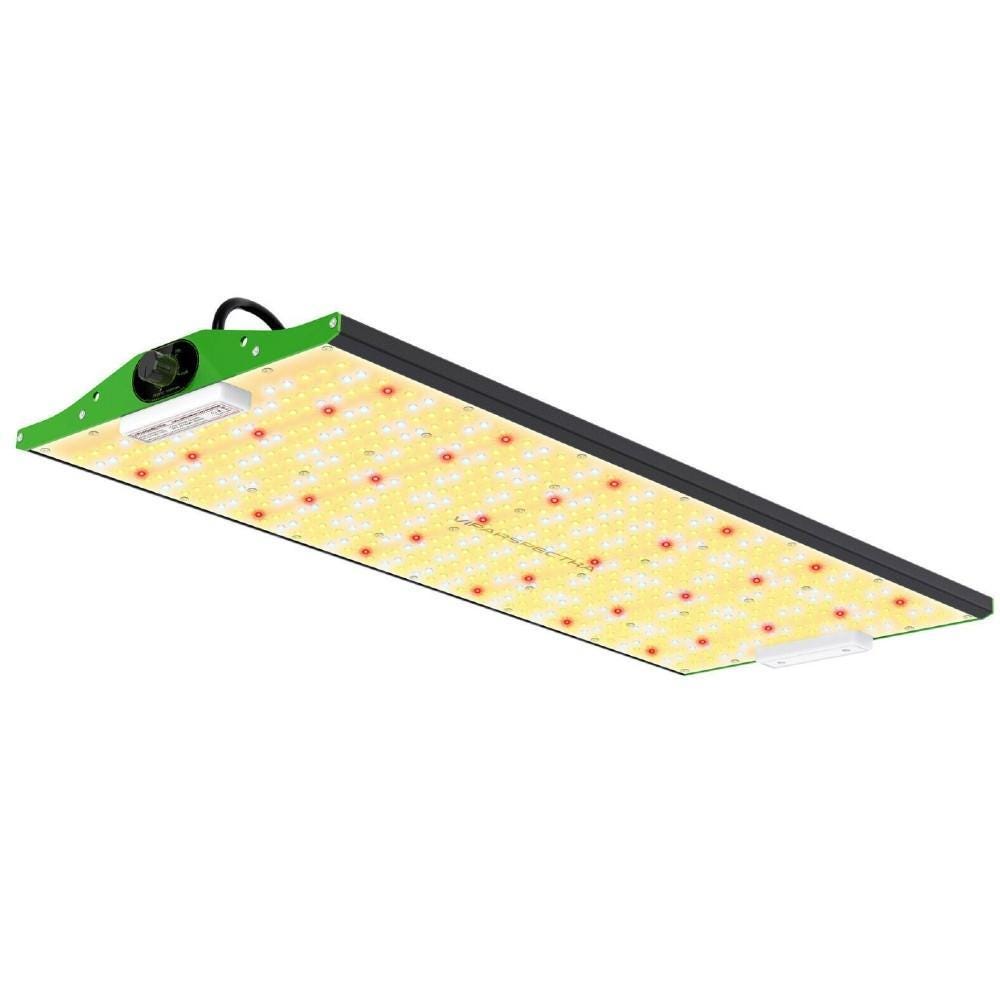
Features:
VIPARSPECTRA P2500 LED grow light has adopted the SAMSUNG LM281B+Diodes-the high light output LED in the market, high energy efficiency and long lifespan while improving light penetration. An added dimmer knob is featured to manipulate the brightness level of the entire light, allowing flexibility to obtain perfect growth performance for each growing phase. Consists of 22pcs 660nm of red light, 544pcs 3000K and 272pcs 5000K of the white light spectrum and 2pcs IR 730 light, provides plants in all stages from veg to flower with everything they need in the natural sunlight. Achieve greater yield while saving you on energy costs! Silent fanless design. No fans zero noise. Built-in large areas of solid aluminum heat sinks, essential for heat dissipation while ensuring long lifespan of the light
What Color LED Grow Lights Are Best?
The best light color types for indoor plants are red and blue LED grow lights. Red and blue are more important than yellow and green. Your houseplants must get the correct wavelengths.
What is the ideal light intensity for growing houseplants?
Indoor plants tend to require more light hours than outdoor plants, but you shouldn’t leave the lights on for a full 24 hours. The ideal light intensity for growing houseplants should be 14 to 18 hours of light per day.
What should you pay attention to when choosing a high-quality grow light?
Quality build and materials
Durability is one of the most important things about LED bulbs for indoor plant production. If your lights are designed with the highest quality materials, i.e. PVC, metal, aluminum, etc., then these lights can last 10 years or more so you don’t have to worry about the setup in your living space. You should buy energy efficient LED grow lights from the best standard companies.
Brand reputation
The most difficult task is choosing the best brand to buy your product from. However, all brands have their own specifications, considering that not all options are of the same quality.
When you find that all brands of LED lights are the same in price and appearance, you should go after the brand reputation. Check customer reviews, long history and company research to make your decision easier
High-quality semiconductor chips
The role of the semiconductor chip is to convert electricity into light, and it also plays an important role in determining the wavelength. For adequate lighting, we recommend looking for lights with at least a 3-watt chip.
Conclusion
Light is one of the key factors for plant growth. If you plan to grow plants indoors, you will need an artificial grow light that can replace sunlight to help the plants grow properly. When looking for LED grow lights, you’ll want to consider many factors. We recommend choosing products that are waterproof, durable, portable, energy-efficient, full-spectrum, and have a warranty.
Best 600W LED Grow Light Bars in 2022
August 01, 2022
Growing with fluorescent lights is more energy efficient than growing with incandescent lights, but they tend to be a more expensive option. Example of a CFL grow bulb. CFL bulbs promote longer life and a better growth spectrum. LED grow lights offer the latest technology on the market today.
Also, what is the best growing light for indoor plants?
Fluorescent lamps are an effective complement to natural (window) light. …
High-Intensity Discharge (HID) lights are ideal for growing mature edible plants. …
Light Emitting Diode (LED) Lights: For efficiently growing large numbers of plants, LEDs provide the best results. …
Why Use a Grow Light?
Grow lights are pretty nifty for hobby gardeners and commercial growers alike. Here are some common uses for grow lights:
Growing plants entirely indoors
Starting seeds or propagations
Extending the growing season of some herbs and veggies
Supplement insufficient natural light
That last one is pretty important to us succulent-growers. Have you had ever problems with succulents turning out just plain green instead of all those vibrant colors Pinterest promised? Or you order plants that look really pretty and then slowly fade to dull green over a few weeks?
Yup, that’s because they haven’t gotten enough light (or not enough strong light). You can kind of break downlight needs into 3 levels.
Level 1 — The bare minimum amount of light a plant needs to survive. It’s quite low, actually, in the case of most succulents. Internal rooms of a house would often be at this level. Plants getting this much light will etiolate if left in these conditions for any significant length of time.
Level 2 — This is the minimum amount of light a plant needs to avoid etiolation (stretching). There’s a pretty big gap between level 1 and level 2. It’s totally possible to have a plant under a grow light and it still becomes etiolated (if the light is too far away or not strong enough).
Level 3 — The amount of light necessary for a succulent’s “true colors” to appear (also called “sun-stress” or “sunblush”). The gap between level 2 and 3 isn’t that wide, actually. Once you’ve successfully avoided etiolation, it usually just requires a little more light.
That’s hardly a scientific explanation, but it helps to know what you’re up against.nowing the specific light requirements of each plant species in your collection will help you to determine how much light you actually need to provide. Remember, when it comes to growing succulents and cacti, knowledge is power! Although every plant is different, the answer to most of the aesthetic issues of succulents is just more light.
Grow lights are especially useful for windowsill succulents. South-facing windows have the best light (if you’re in the northern hemisphere). I’ve found that those are the only succulents in my house that develop their sunblush naturally. Succulents in any other window tend to stay green unless they also get a little love from a grow light.
This is especially pertinent during winter when both daylight hours are shorter and light intensity is lower. Your succulents are at increased risk of not only becoming a boring green but also becoming etiolated… for which there is no cure.
ECO Farm TOP Series 650W Full Spectrum Commercial LED grow lights
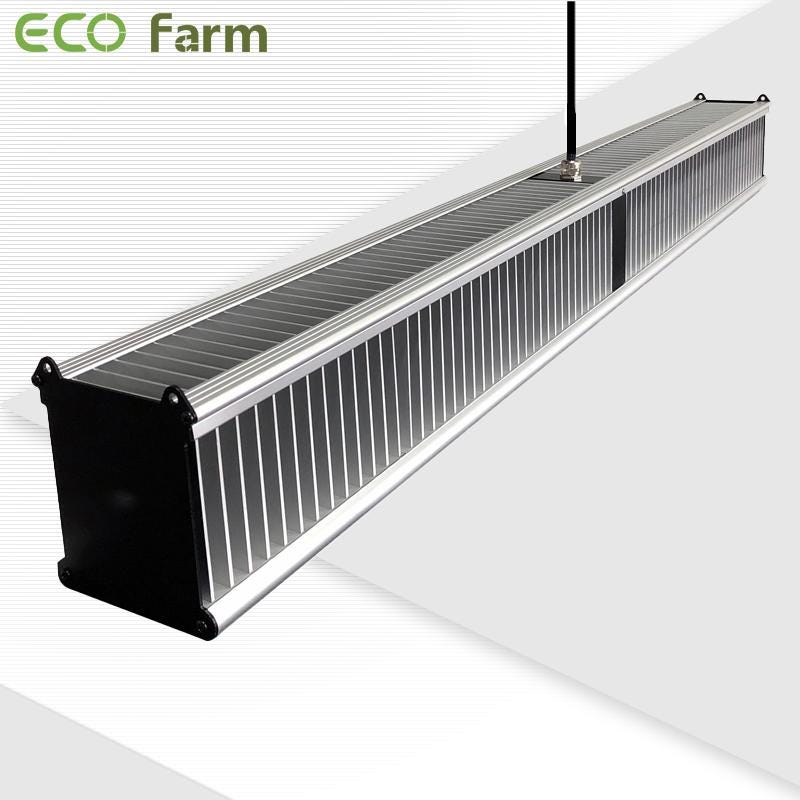
Features:
This ECO Farm LED grow light is designed for top lighting solutions for indoor planting, which can bring higher crop yields and better crop quality. Using Samsung LM301B diodes, the luminous efficiency is 2.7 µmol/J, and the output of 1908 LEDs is 1755 µmol/s. IP65 waterproof ensures that the lamps can work in humid and harsh environments, and supports 0–10V dimming, compatible with ECO Farm intelligent control And most controllers on the market. If you are starting to grow plants indoors, full-spectrum LED plant growth lights are the best choice because they can provide all the light you need without overheating issues. Insufficient light can lead to long internodes of tall plants, so do not use weak light, which can cause the seedlings to reach out and cause “stretching.” ECO Farm’s full-spectrum LED plant growth light is specially designed for growing healthy and high-yielding plants.
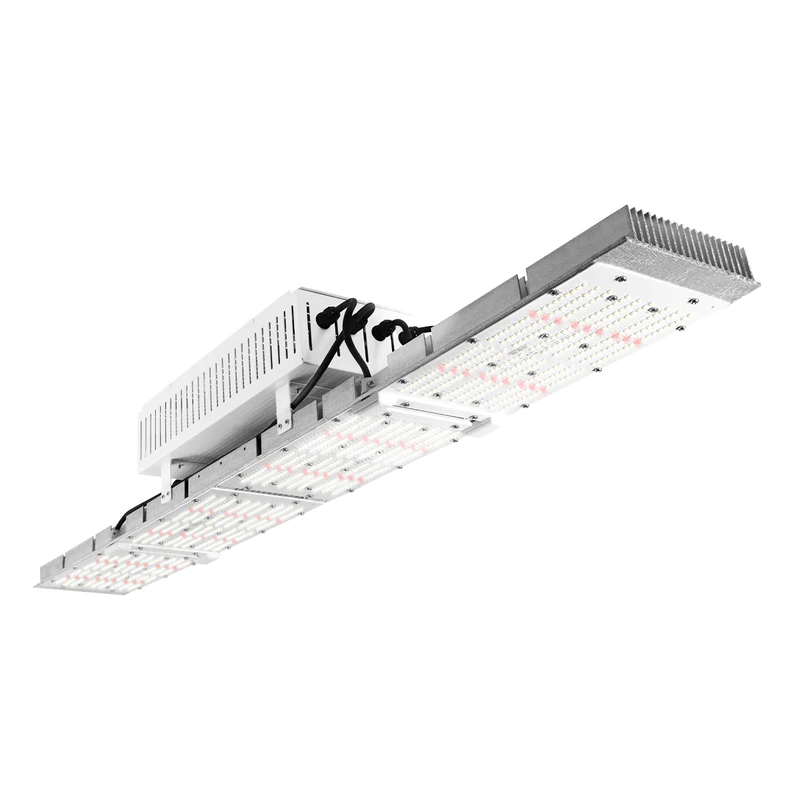
Features:
The AgroMax Prime 600W Flower LED Grow Light is designed to replace and outperform 1000W HPS grow lights in high value flowering crop applications. This evolution of the PRIME series combines a huge PRIME heatsink with a Samsung LM301B 3500K chip and opted for a 660nm red chip to increase yield, targeting flower development and yield. With a 4' x 5' footprint and 1524 µMol output, the Prime 600 Flower offers explosive blooming potential as well as huge energy cost savings. Additional features include a low profile plug-and-play design and a moisture-resistant conformal coating, making the PRIME 600w Flower an ideal high-efficiency LED lighting solution for home and commercial use.
MedicGrow 550W Commercial LED Grow Light
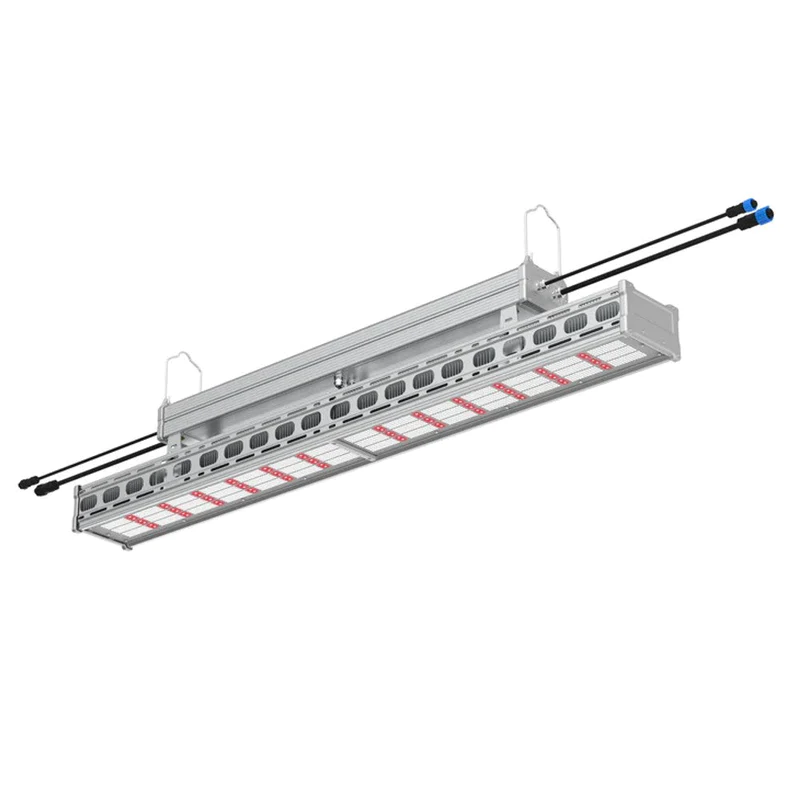
Features:
Medic Grow LED grow lights are specially developed to replace 1000 watt HPS for supplementary or primary lighting in vegetable growing greenhouse applications. This LED grow light is a full cycle LED grow light with a broad spectrum and enhanced red light for maximum yield. Built-in 2300 high-quality white LEDs and OSRAM red LED diodes. This LED grow light provides even light in a coverage area of 6' x 4' space. The average PPFD value was 3271 µmol/m2/s (6 inches above the canopy). The light output PPF was 1540 µmol/s and the PPE was 2.8 µmol/J. It only needs 550 watts of power. It is made into a single LED grow light. With a width of only 5.38 inches, it minimizes the impact of shade on greenhouse crops.
The Best LED Grow Lights for Your Grow Setup: The Complete Buyer’s Guide
If you’re looking for the best LED grow lights for your grow setup, this article is just what you need. In this complete buyer’s guide, we’ll discuss the different types of LED lights and how they can help your garden. We’ll also cover some important things to consider when shopping for a new LED light system — like lumens, wattage, color spectrum — so you’re safe.
Lumen
Lumens are the unit of measurement for the total amount of light emitted by an LED grow light. High lumen light penetrates the plant canopy better and reflects more photons downstream from the walls of the grow tent.
Watts
Wattage is a measure of the amount of electricity consumed by an LED light system operating at full power; in most cases, it is measured over time, not instantaneous use. You need efficient light fixtures that give you the highest lumen output.
Spectrum
Different plant growth stages require different spectra. For example, blue light is ideal for the vegetative phase because it promotes plant growth and chlorophyll production. The red/far red spectrum promotes flowering and increases plant yield during harvest. Not all lights allow you to control the spectrum, but our S-Series LED grow lights feature a 3-channel dimmer that lets you control UV/IR cool white and warm white output, meaning you only need one light through whole growth.
Heat Output
Inefficient lamps such as HPS lamps consume a lot of watts and output a lower lumen ratio because the rest of the energy is lost as heat. If you have a cool growing space, then a high temperature light like the HPS accessory will do. If you want to prevent heat stress, then LED grow lights are your best choice.
Light use
The type of light you choose depends on what you will be using it for. If you’re interested in cloning, a low power 100W LED grow light is available. If you want more blooms, use a bloom enhancer or a heavier light in the red spectrum.
Available space
Larger planting spaces require thicker lights for full plant coverage. For larger growth, check out commercial grade LED grow lights. The PM200 is a nice middle ground between residential and commercial grow lights. It will fill a 3×3 tent with a scientifically tuned growth spectrum. However, if you have little space, anything under 500W will do.
Increase space moisture content
If you’re growing in a high humidity area because you have VPD in mind, LED grow lights are safer than HPS alternatives because there are fewer elements exposed and fewer points of failure. HPS lamps can short-circuit in high humidity environments.
Conclusion
There are many incredible stylish grow light options on the market for houseplants. Make sure you base your choice on your plants’ needs, quantity, location, and environment. As you buy the best stylish grow lights for indoor plants from our list, feel free to share your thoughts about the top models discussed in this post.
Best Large LED Grow Lights for Indoor Plants (2022 Updated)
July 27, 2022
Have you been looking for the best LED grow light for your needs? You are in the right place. We recognize that among the many options on the market, making the right choice can be confusing and confusing.
This article will help you choose the right LED grow light more easily. We take into account the different needs and wishes of all consumers to provide you with the perfect guide on how to choose the right product. Make your shopping worry-free!
Are Expensive Grow Lights for Large Houseplants Worth It?
It depends on what you think is most important to you. The most expensive grow lights for large houseplants aren’t always better. In some cases, the cost of buying more expensive grow lights for large houseplants can be worth it because it preserves your initial investment in the product. It may not be worth it for a shopper to buy an expensive product from another brand.
Some of the best grow lights for brands of large houseplants charge unbelievably high prices for their creations. It should be noted, however, that some expensive grow lights for large indoor plants may not necessarily be worth it to the everyday consumer. Prices ranging from $100 to $500 typically focus on flexibility and precise control over strength, bloom and density.
If you’re looking for a premium experience, these more expensive grow light options for large houseplants are worth the money. However, if you just need to get up quickly in the morning, we recommend avoiding these fancier devices.
ECO Farm ECO D700 700W Samsung LM281B Chip LED Grow Light
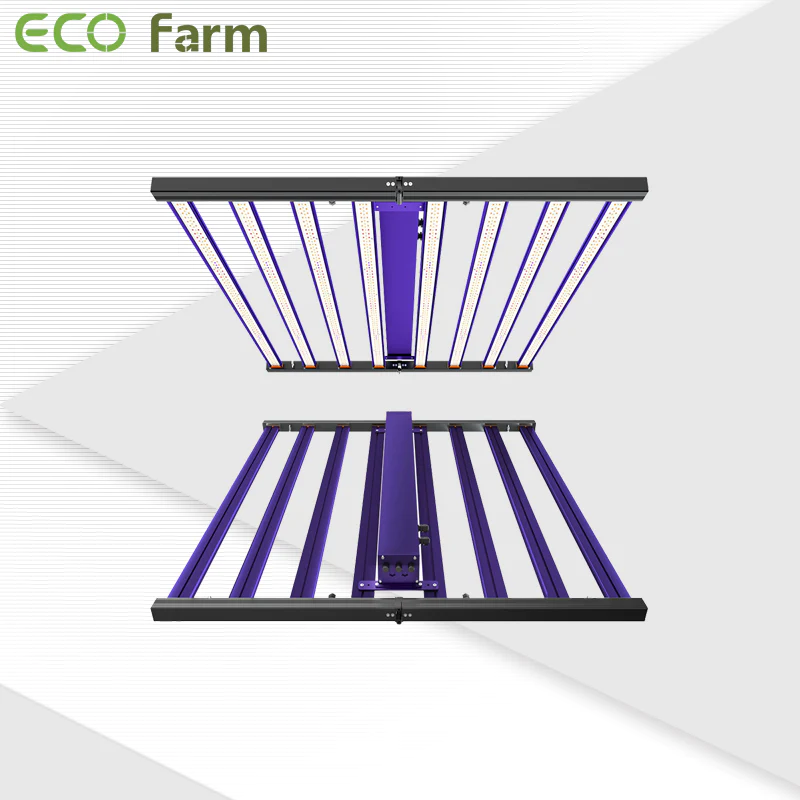
Features:
This ECO Farm LED grow light features the highest output white chips and Osram chips, with a high energy efficiency of 2.6 umol/J, PPF 1820 µmol/s, LED grow lights provide plants with powerful and high-quality light to maximize yield . The vegetable footprint is 5 x 5 feet and the flowering footprint is 4 x 4 feet. This grow light has an excellent full spectrum (3000K, 5000K, 660nm, 730nm IR, 395nm UV) and is ideal for all growth stages (germination, cloning or cuttings, mothering, vegetative and flowering applications) for higher yields . The dimming knob can adjust the light intensity at will. Designed with daisy chain function, up to 100 lights can be connected. Multi-light connections with uniform dimming are especially beneficial for large-scale indoor and commercial cultivation.
TotalGrow MH Lumyre 720W LED Grow Light
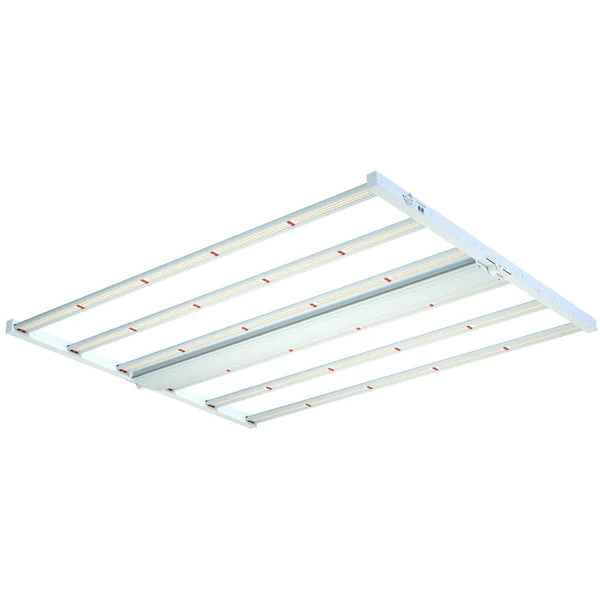
Features:
The TotalGrow LED grow light bars in a slim profile with a built-in power supply that evenly distributes the ideal light intensity across your growing area to meet your growing goals. Superior, customizable full spectrum supports efficient, high-quality growth of any life stage and crop variety. This plug-and-play solution with direct daisy chaining is easy to implement, has low upfront and ongoing costs, and sustainably produces high-quality crops. 720W power, 2.6 μmol/J, meet the light intensity required by your plants. The high-efficiency and low-power LED configuration with 6 LED strips reduces the temperature of the LEDs, with no fans or moving parts, significantly reducing the number of possible points of failure compared to other grow lights. It works out of the box, reducing installation costs.
Maxibright JUNO PRO — 720W LED Grow Light
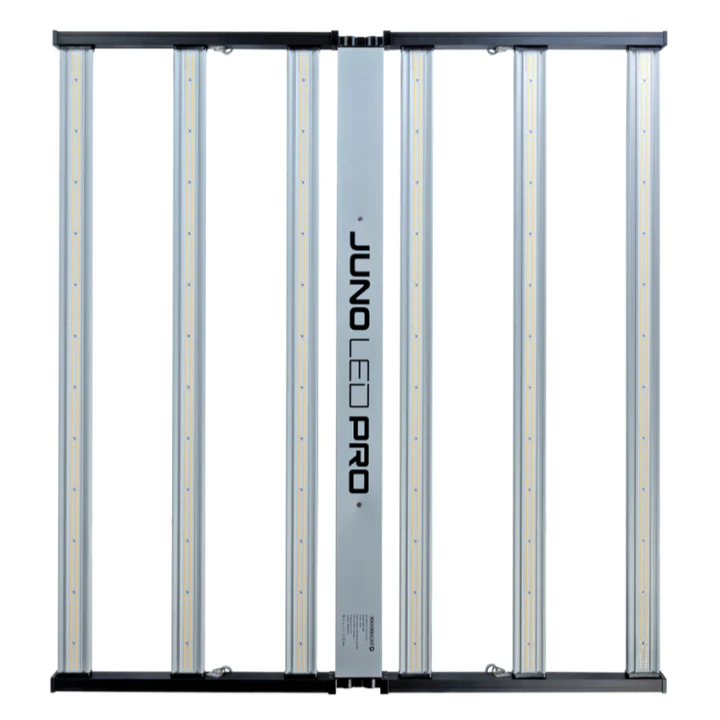
Features:
The Maxibright LED Grow Light is an affordable and powerful 720 watts, has an output of 1800 micromoles per second (PPF), and is optimized to cover an area of 1.5 m x 1.5 m. 6 LED strips to provide uniform full spectrum light with added red spectrum for enhanced blooming. The whole luminaire folds in half, is very easy to transport, and unlike other LED units on the market, it is truly plug-and-play and requires zero assemblies of any kind. At only 40mm high, it maximizes the usable height in any growing space. Juno uses all-new MaxiLED chips. These high-quality chips are hand-picked by Maxirow and will provide the perfect spectral output for high-yielding plants. Each unit comes with a remote dimmer that allows you to adjust the light from 25% — 50% — 75% — 100% power.
Consider These Before Buying Led Grow Light
Check Customer Feedback
Quality is the most important aspect of any led grow light. Pick a product that other customers love. More the rating it has from consumers, probably more it is free from defects or malfunctions.
The best way to judge the quality of a led grow light is through its customer reviews on the merchant’s website
Check The Features
The led grow light that brings many benefits to you is the one with all the features you are looking for. There are so many different led grow lights on the market with loads of unique features.
As such, you will need to do your research and find out which product is the best fit and offers the full range of features to serve your needs.
Design
Many led grow lights are designed to be used by either men or women for various reasons. Thanks to top brands who try to add new designs with the user’s choice in mind. When you get a lightweight design and good functionality, you will love it.
Price
While reviewing this range, we found that price doesn’t necessarily correspond with performance. And though we don’t include price into our product performance calculations, we recognize that it can make a big difference in what model you decide to purchase.
Weight
We assigned this feature the same as the design choice because these two, more than any other features, give you the best picture of how a led grow light will look and perform.
This category is about “the feels” and relies heavily on input from various users.
A lighter led grow light also helps consumers to maintain their work smoothly. This further enhances your overall performance as you can maximize your efficiency.
Value
Although the performance of a led grow light is a huge part of a purchasing decision, we know value is also important.
Fortunately, all of this review’s led grow light can be considered a decent value.
Conclusion
In the end, we hope our guide has helped you make a more informed decision when it comes to purchasing. The above indoor grow lights are of high quality and designed to provide the best user experience. If you consider any of these products, you won’t be disappointed with your purchase.
While there are many products to choose from, one may suit your needs better than the others. For this reason, we encourage readers to dig deeper into each to determine which one is right for them. We hope you enjoyed this article on the best grow lights for large indoor plants.
Best Small LED Grow Light Bars in 2022
July 25, 2022
Indoor plants need light to grow, and unless you live in a sunny Mediterranean climate, they are best grown indoors with artificial light. The good news is that indoor lighting allows you to precisely control the amount of light your plants receive each day — regardless of the weather outside.
Lighting schedule and vegetative vs flowering stage
Indoor plants have two distinct growing phases — vegetative and flowering. When growing plants outdoors, the plants usually begin flowering (producing buds) when the days become shorter as summer shifts to autumn. Indoors, there are no seasons, so growers can “trigger” the flowering stage by artificially mimicking the seasonal shift by adjusting the hours of light the plants receive per day.
The vegetative stage
During the vegetative stage, growers tend to give the plant an 18/6 lighting schedule, or 18 hours of light and 6 hours of darkness (other combinations include 17/7 or 19/5, anything that isn’t 12 hours of darkness).
The flowering stage
By shifting to a 12/12 schedule, growers can trigger flowering. Flowering too early can mean a smaller yield while waiting too long to flower your plants can result in plants too big for your grow tent or indoor room. Harvesting your flowers too soon or while clear trichomes are present will result in a smaller harvest with fewer terps and potency, while harvesting too late can result in too many amber trichomes which can cause the flower to be harsh and sedative for the user. With some strains, the vegetative stage can range from around 2–4 weeks to somewhat longer, which is all dependent on the sexual maturity of the plant. With clones, this stage is significantly shorter.
LED vs HID lights
Most indoor grow lights in use today are divided into two main categories — light-emitting diode (LED) lights and high-intensity discharge (HID) lights.
HID lights
HID lights include metal halide (MH) and high-pressure sodium (HPS) lights, and HID grow systems often use a combination of the two in order to increase yields. These lights tend to produce more heat and require more energy than LED lights. This means you may need more height in your grow space to keep the lights further from the plants.
LED lights
LED lights are typically more energy efficient and give off less heat. This can mean that they are safer, but looks can also be deceiving. Because the lights don’t appear to be working as hard, it can be easy to underestimate the light your plants are receiving, potentially resulting in a light burn. Also, they tend to have a higher price tag than HID lights.
ECO Farm ECO-RAY 100W LED Grow Light Bar

Features:
The ECO Farm light strip has a wavelength selection from 420nm to 800nm and has a full spectrum of light. The planting light belt has first-class LED bulbs, providing an excellent indoor farming experience. The 40 inches long and medium length is perfect for side canopy lighting in a 4-foot area. ECO RAY 100 Slim multi-purpose LED plant growth light bar with a 120-degree beam angle can be used for close-up planting, which can minimize the amount of light on the floor and concentrate it only on your plants. Can maximize Your growth rate, thereby achieving a greater harvest and return on investment. In addition, it has a service life of 50,000 cycles, which is great compared to other products on the market.
Mammoth Lighting 100W Single Bar
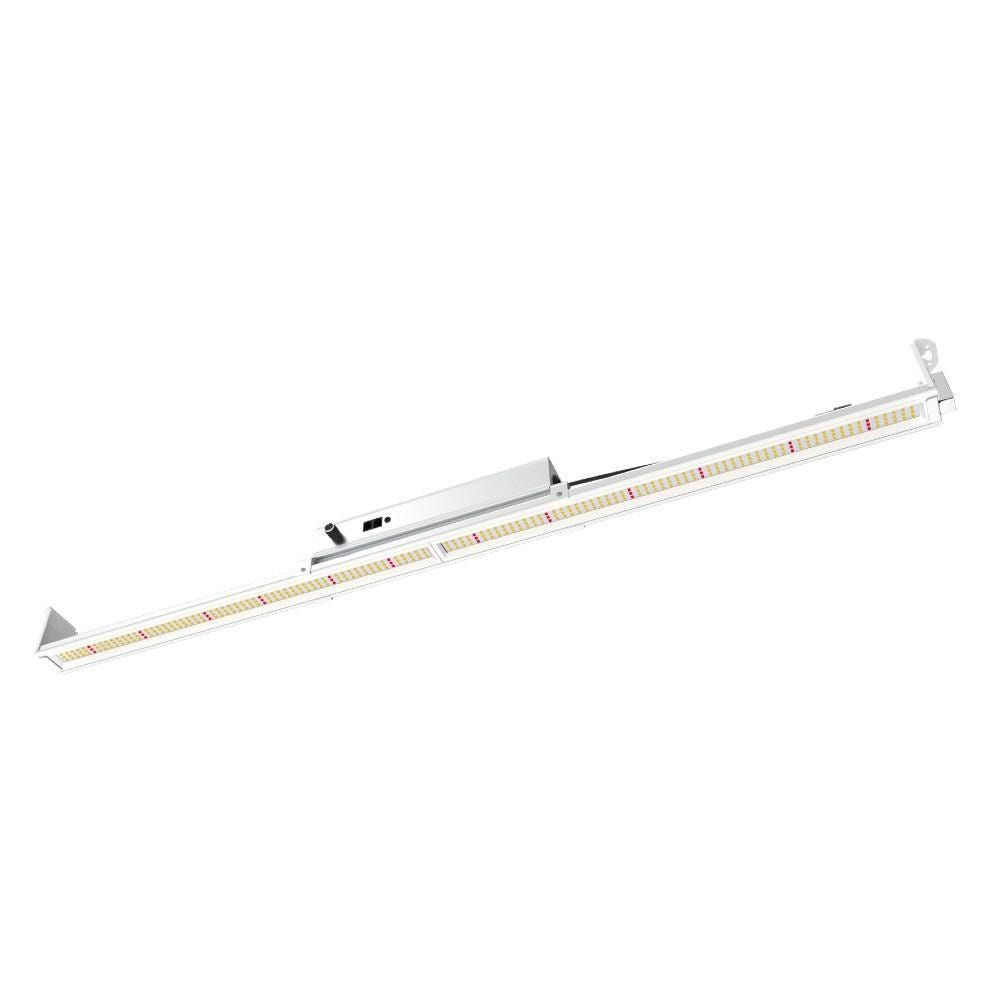
Features:
The Mammoth LED grow lights are built with high-quality Samsung diodes. The lights encompass a continuous range of wavelengths from blue and green to red, creating a light blend matching the natural sunlight. We customized our light spectrum to optimize plant growth and increase yields while consuming less energy and reducing operating costs compared with traditional horticulture technologies. True multi-use,100w single bar, with standard dimmer knob and rj ports for group control. Cloning, Veg, Side Lighting, Lighting Gaps, etc. Hardware included to wall mount for Side Lighting and Remote Mountable Driver for flush mounting.
LUXX 200w LED Grow Light Bar 208–277v
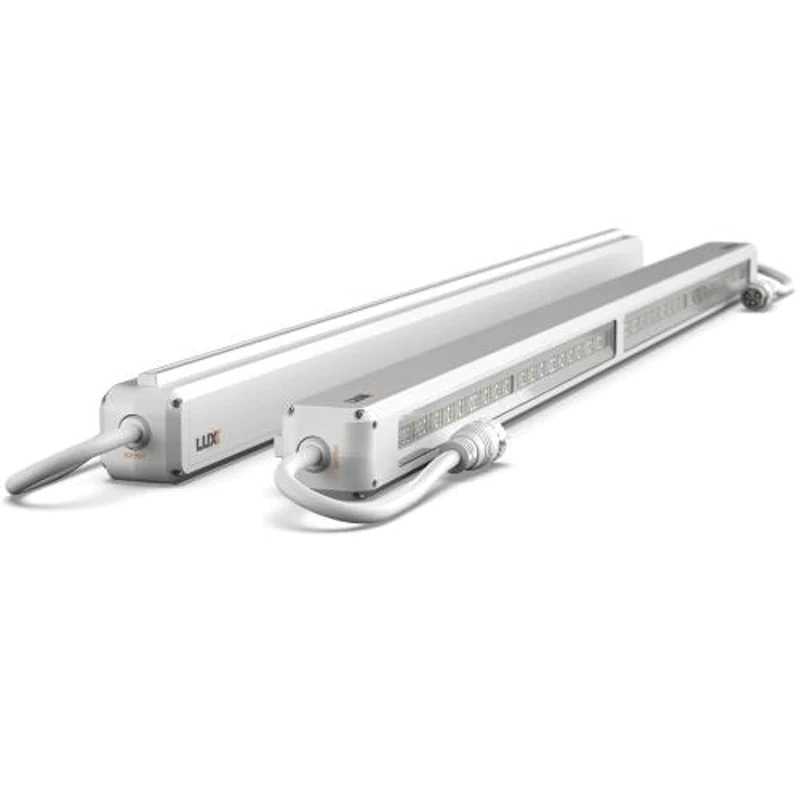
Features:
The Luxx 200W LED Grow Light Bar is designed and manufactured with top-of-the-line components, including the top bin diodes that produce the Veg Spectrum that plants love. The 200w LED Bar form factor lets you choose your wattage and footprint to suit any growing environment. The 200w LED strip can operate in single stack, multi stack or greenhouse growing environments. The modular design allows you to customize and expand your 200-watt LED light bar system to meet your operational needs.
Factors to Consider When Buying LED Grow Lights
So now that you know what LED grow lights are and the benefits they provide, it’s easy to see why so many indoor growers choose to use them. If you decide to use them for your setup as well, then you’ll want to make sure you choose the highest quality lights.
Finding an LED grow light isn’t a problem, as there are so many different options to choose from; it’s difficult to try and sift through all the different options and decide which one is best for your specific needs. So how do you do it? By considering some key factors before making your final choice.
Here are some of the most important factors to consider that will help you choose the right LED grow lights for beautiful, rich, sticky, fragrant and powerful plants.
Heat output. One of the most important factors to consider is the heat output of the lamp. If you’re planting where space is tight and the light is hot, you may end up killing the plant.
PAR value. All plants — use a specific range of light called photosynthetically active radiation (PAR) for photosynthesis. The PAR value of a lamp covers electromagnetic wavelengths ranging from 400 to 700 nanometers. LED grow lights produce a lot of different wavelengths of light, and plants may not absorb all of those wavelengths, they reflect light they don’t use. Simply put, PAR refers to the amount of light produced by LED lights that plants can use. The PAR value of an LED grow light indicates the effectiveness of the light. The amount of light in micromoles per second per square meter is used to measure the PAR value. The higher the intensity of the PAR value, the better the effect of the grow light.
Shape of the lamp. You also need to consider the shape of the light. LED grow lights come in a variety of shapes, including bulbs, panels, bars, and saucers. Different styles are better suited to different needs, so be sure to do some research before deciding which shape is best for your growing space.
The number of lights. Typically, a grower will only need one or two lights, and since in most states the number legally allowed to grow is between six and 12, a light or two should do the job for that amount. However, if you plan to grow more plants, you may need more LED lights because you want to make sure that all your flower buds get the light they need to thrive. Likewise, if you give your plants too much light, you will end up doing more harm than good.
Programmability. Some LED grow lights are programmable, which is a handy feature because you can just set it and forget it; however, that doesn’t mean programmable lights are for everyone. Before you start shopping, make sure you decide if a programmable LED light is best for you.
Price. Last but not least, you need to consider the price of the light fixture. Prices for LED grow lights can vary widely, so make sure to set a budget before you start shopping so you don’t spend more than you can afford.
Conclusion
If you plan to grow your indoor plants indoors and want to ensure the highest quality yield possible, any of the full spectrum LED grow lights on our list will do just that. Powerful, efficient, reliable and environmentally friendly, each light has been carefully designed to help you grow robust crops.
Like grow tents, fans, nutrition, etc., what you need depends on the job you’re trying to accomplish. Thanks for reading!
Mammoth Lighting Fold Series MF08 LED Grow Light VS Dio-Tech Satellite Unit 830W LED Grow Light
July 20, 2022
There are many factors to consider when looking for the best grow lights, and that’s where we’re here to help point you in the right direction.
They can be a handy solution for growing houseplants, especially if you don’t have that much light where you live, and when light levels drop in winter, no matter what.
The first key thing to notice is the price. Some grow lights are affordable and therefore a great option for everyone, while others can be a bit pricey, so it’s worth weighing how much you want to spend on some grow lights.
Plus, you’ll need to consider their brightness and efficiency, which can get you into the debate over whether to choose fluorescent or LED bulbs. Fluorescent lights are cheaper but less efficient than LEDs, and LEDs do need to be farther from the plan than fluorescents.
This leads to the space point nicely. If you’re working with a tighter growing space, then there are some fluorescent lights that can hang just 3 inches above the plants, while LEDs usually work best between 14 and 24 inches. You can read more about the optimal height for grow lights here.
This distance is also closely related to the brightness data — the more lumens, the brighter the light. If you have some brighter lights, you don’t need to place them very close to your plants as if they were a little dim.
So, with all that in mind, we’ve listed what we think are the best grow lights based on specs, general reviews, and the features they offer that make them stand out from the crowd, and answer your most common questions as well.
Let’s get started — here are some of the best grow lights available today.
Why Choose Full Spectrum LED Grow Lights?
Different LED Grow lights emit different wavelengths based on their spectral patterns. These different light wavelengths stimulate different stages of plant growth, so when choosing the right grow light, you must examine its spectrum for the type of stimulation you want. For example, LEDs that are great for vegetation may not be as effective for flower development.
Mammoth Lighting Fold Series MF08 LED Grow Light

Features:
The Mammoth LED grow lights are built with high-quality Samsung diodes. The lights encompass a continuous range of wavelength from blue and green to red, creating a light blend matching the natural sunlight. 469 Samsung LM301B diodes per bar delivers the industry’s Highest PPFD and Yield. Mammoth customized their light spectrum to optimize plant growth and increase yields while consuming less energy and reducing operating costs compared with traditional horticulture technologies. With a proprietary blend of 3000k+5000k+660nm+730nm, for full cycle growth. 730nm speeds up flower (~5 days) and adds up to 5% more yield. Up to 5x5 flower coverage, 7x7 veg coverage. Strategically designed bars/spacing delivering more even lighting coverage (and growth) over a 5'x5'.
Dio-Tech Satellite Unit 830W LED Grow Light

Features:
Dio-Tech lighting solutions are designed by growers for growers. The result of years of research and development devoted to optimizing plant growth performance. Dio-Tech is powerful enough to not only replace but completely outperform your existing HID lighting, with a lighting formula that provides the ultimate spectrum for your garden at every stage of the plant growth cycle. The Dio-tech 830W LED combines a high-end Osram chip with a built-in dimmer. Dio-Tech 830 starts in F1 mode (flowering spectrum) but has a wide spectrum for excellent vegetative growth.
What to consider when choosing your grow lights.
The decisions don’t stop once you choose between LEDs and fluorescents. There are many types of grow lights on the market these days, but these considerations can help narrow your search:
When you’ll be using them for: Again, fluorescent lights tend to be better for beginners who are using grow lights on a small plant collection for a limited time window (i.e., to start seeds). A light that holds two 40-watt T12 fluorescent bulbs would be plenty in this case. If you are a more advanced grower looking to keep plants alive year-round, or you’re working with a finicky crop you really want to see succeed, go with LEDs.
How much room you have: Do you have room for an entire shelving unit with built-in grow lights, or are you looking for a single bulb that can fit into an existing clamp light? Consider vertical space, too. LED lights need to hang at least 14 to 24 inches above the plants, whereas fluorescent lights can hang as little as 3 inches above the plants, making it easy to hang several shop lights on one stacked shelving unit.
What you’re growing: Generally, lights that have a bluer hue (5,000 to 7,000 Kelvin) promote vegetative growth while red ones (3,500 to 4,500 Kelvin) are better for fruiting and flowering. Plants that need a lot of sunlight will require brighter bulbs that have a higher wattage number.
Your sensitivity to light: If you experience any photosensitivity (or just don’t want bright, colourful lights in your living space), we recommend choosing white, full-spectrum bulbs.
Conclusion
We can only tell you so much about buying your new best led grow lights. But we are confident that if you follow the recommendations that we have given here, you will find something that caters to your needs the best.
Best of luck with your new purchase!
